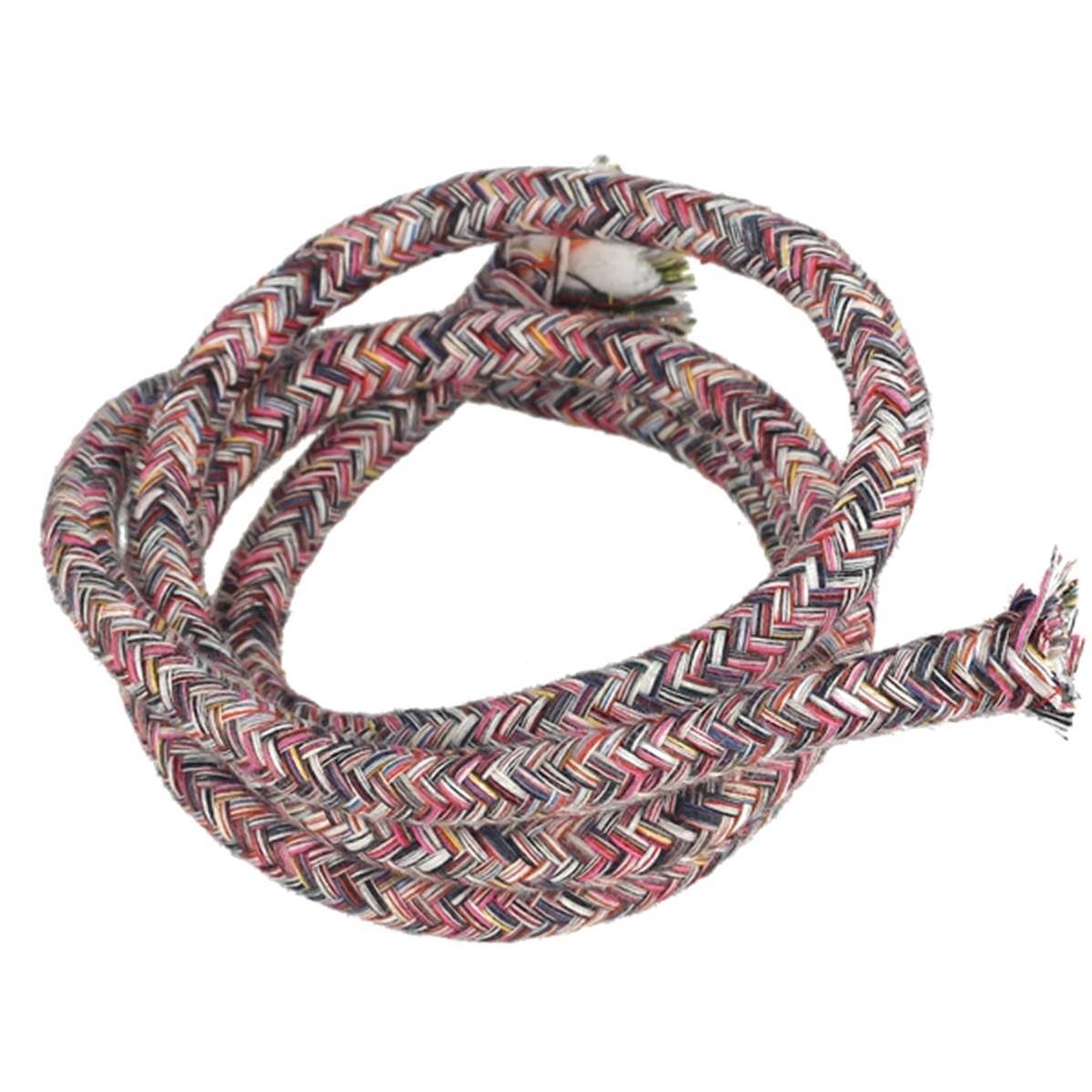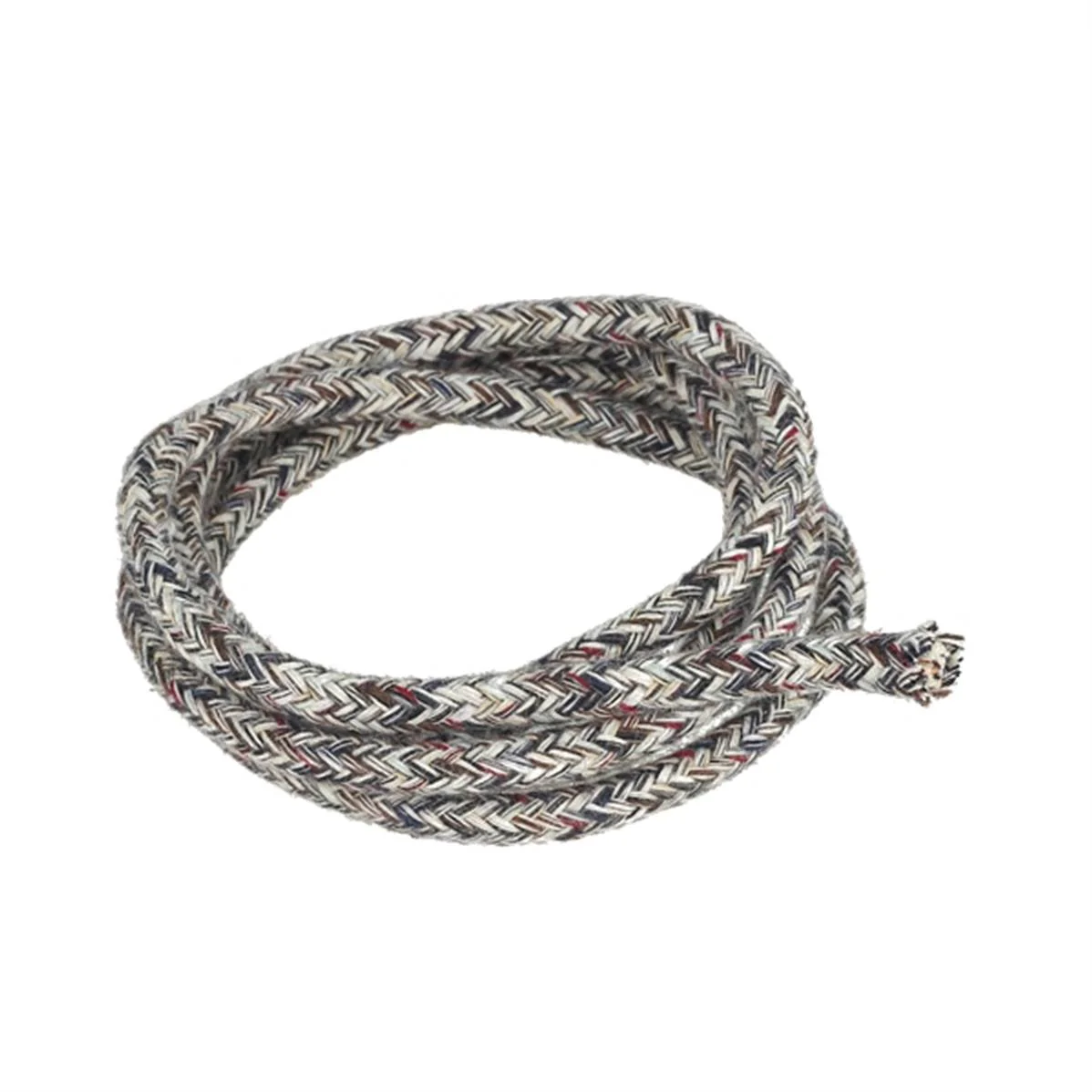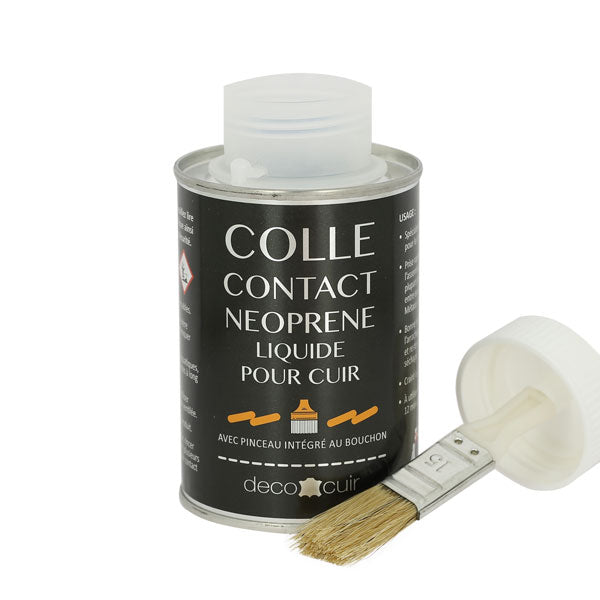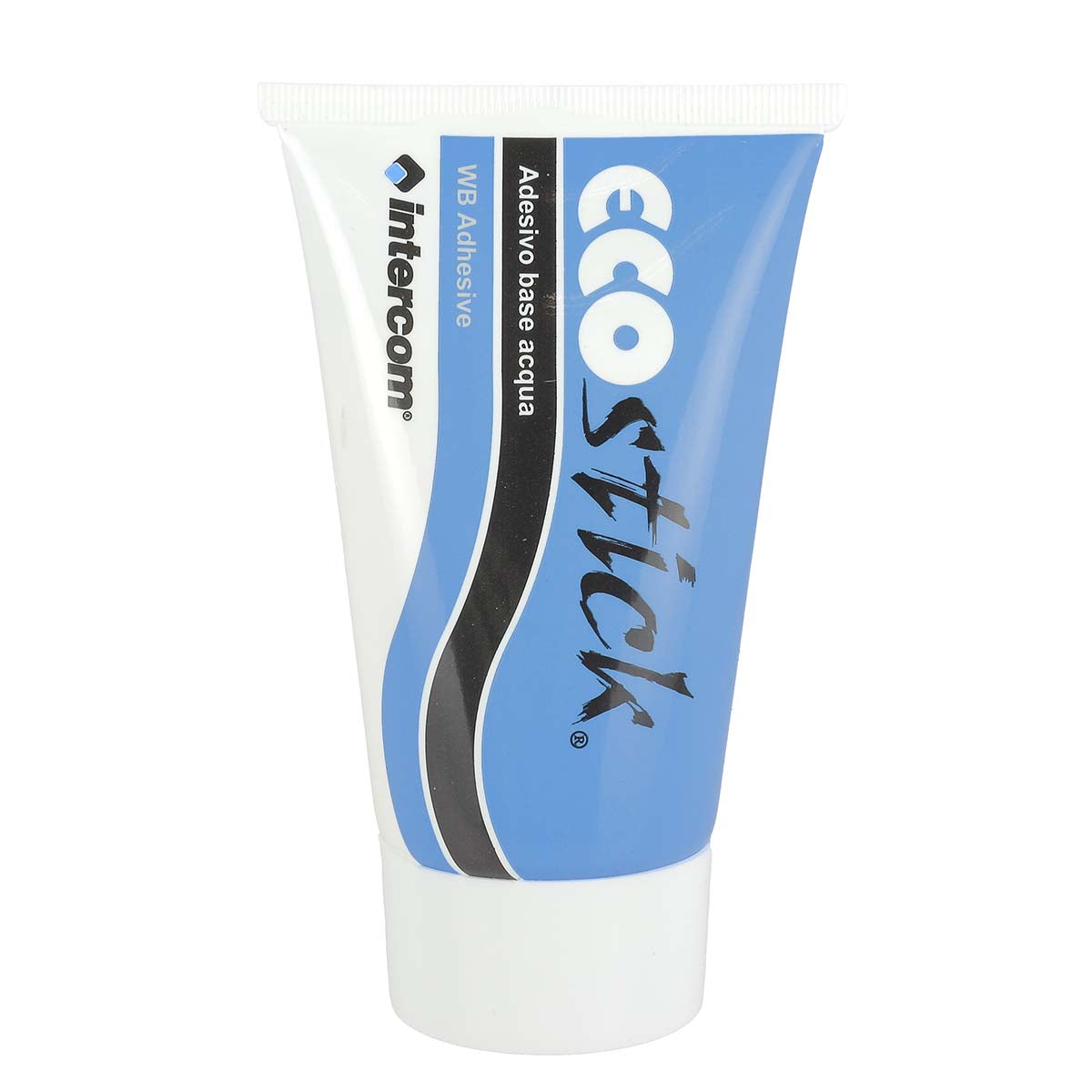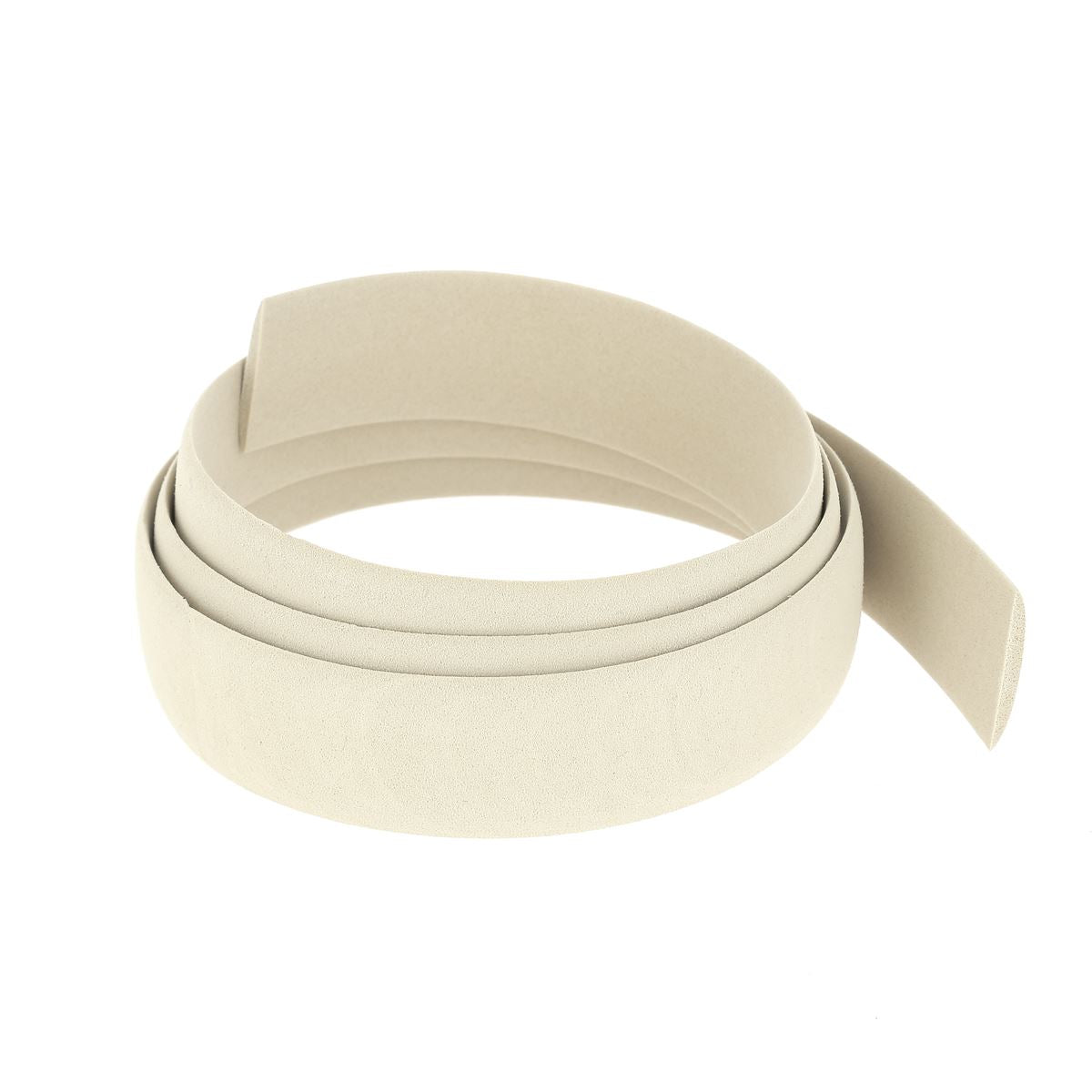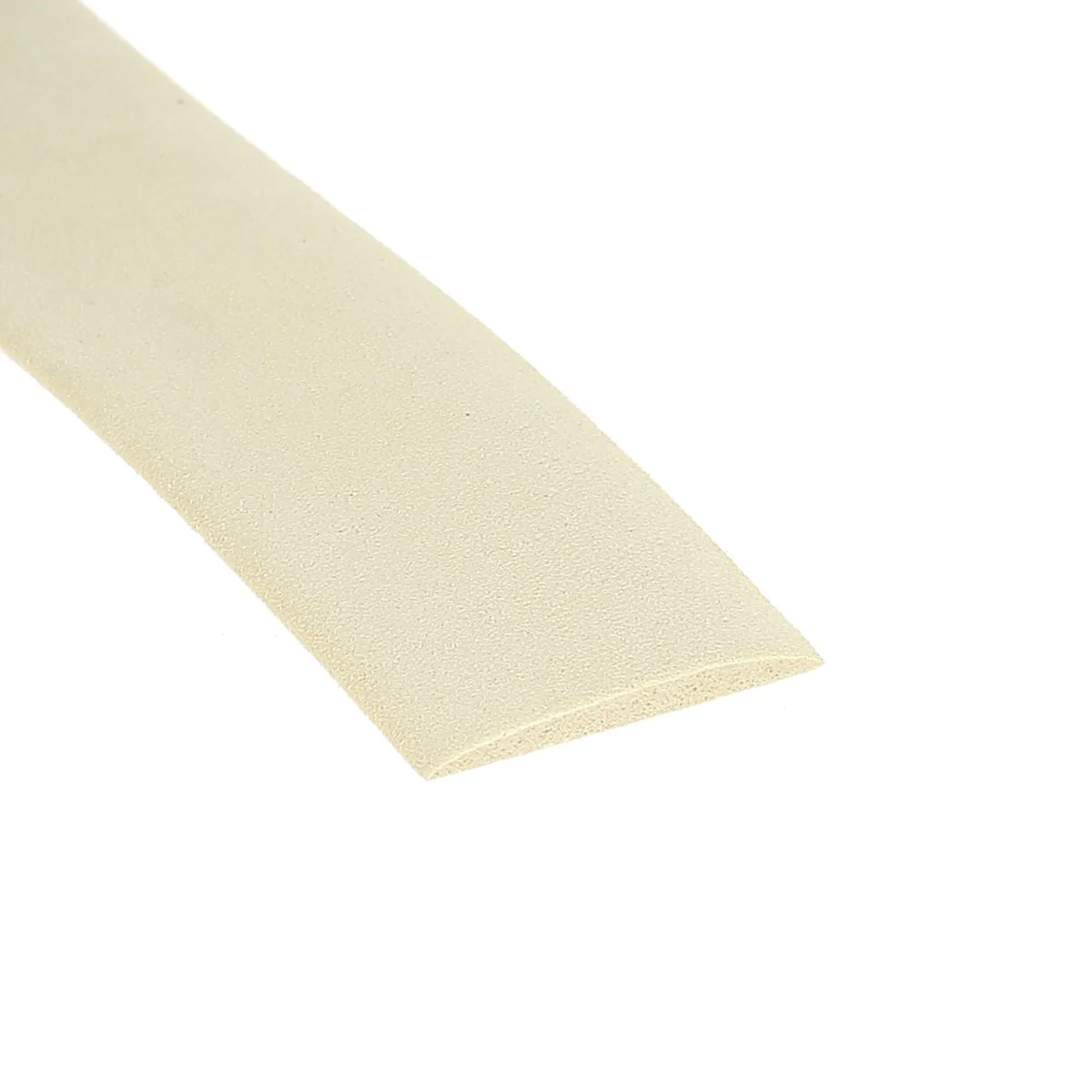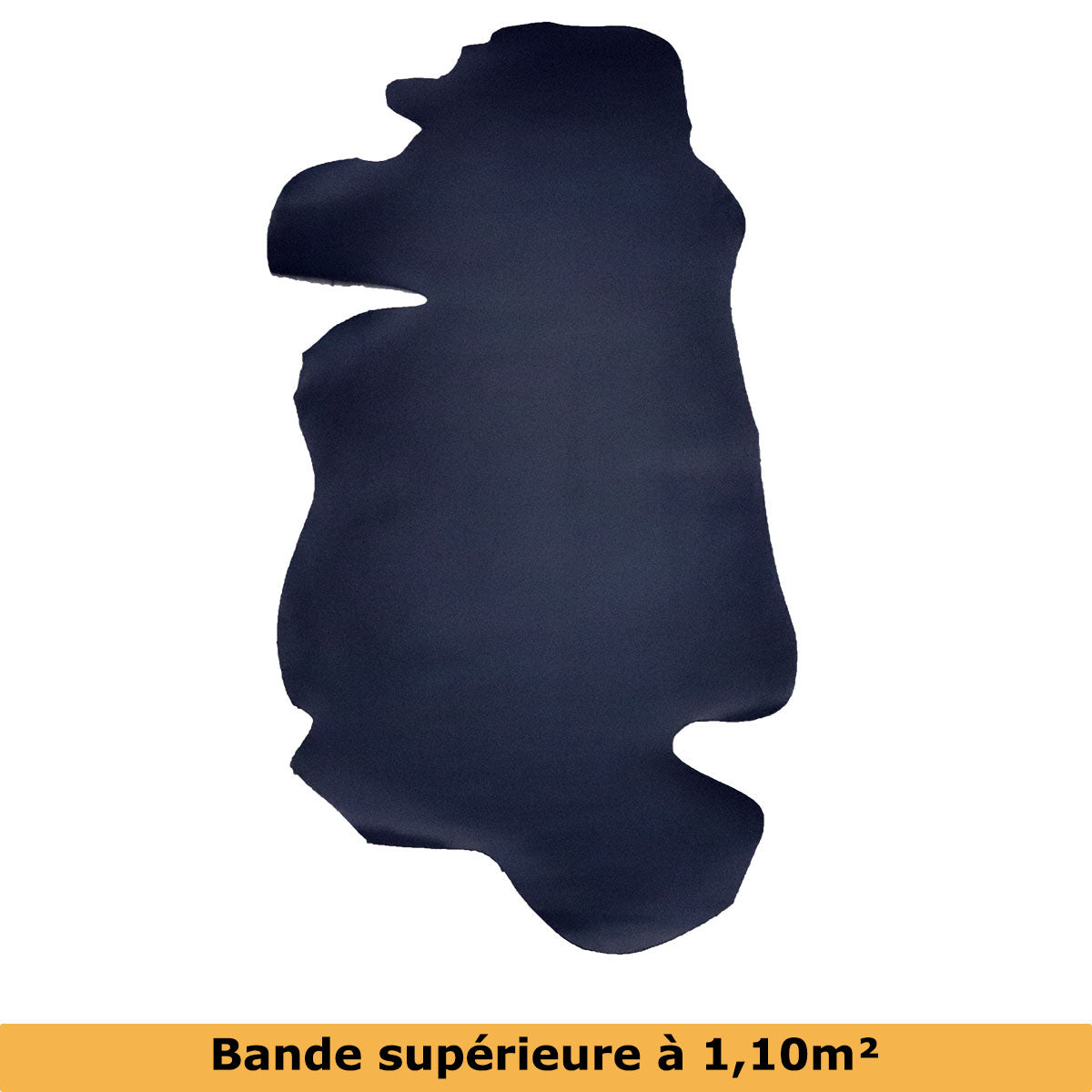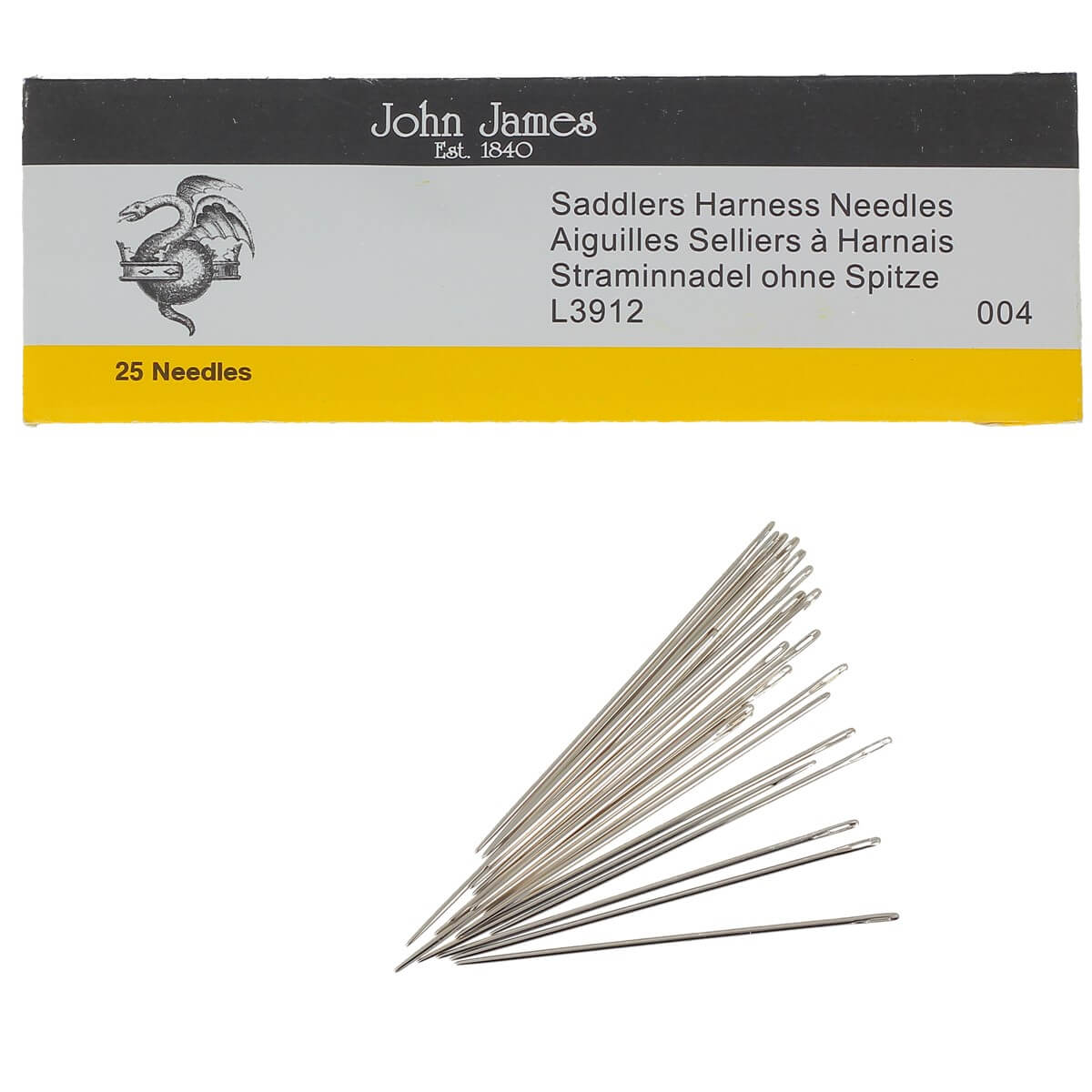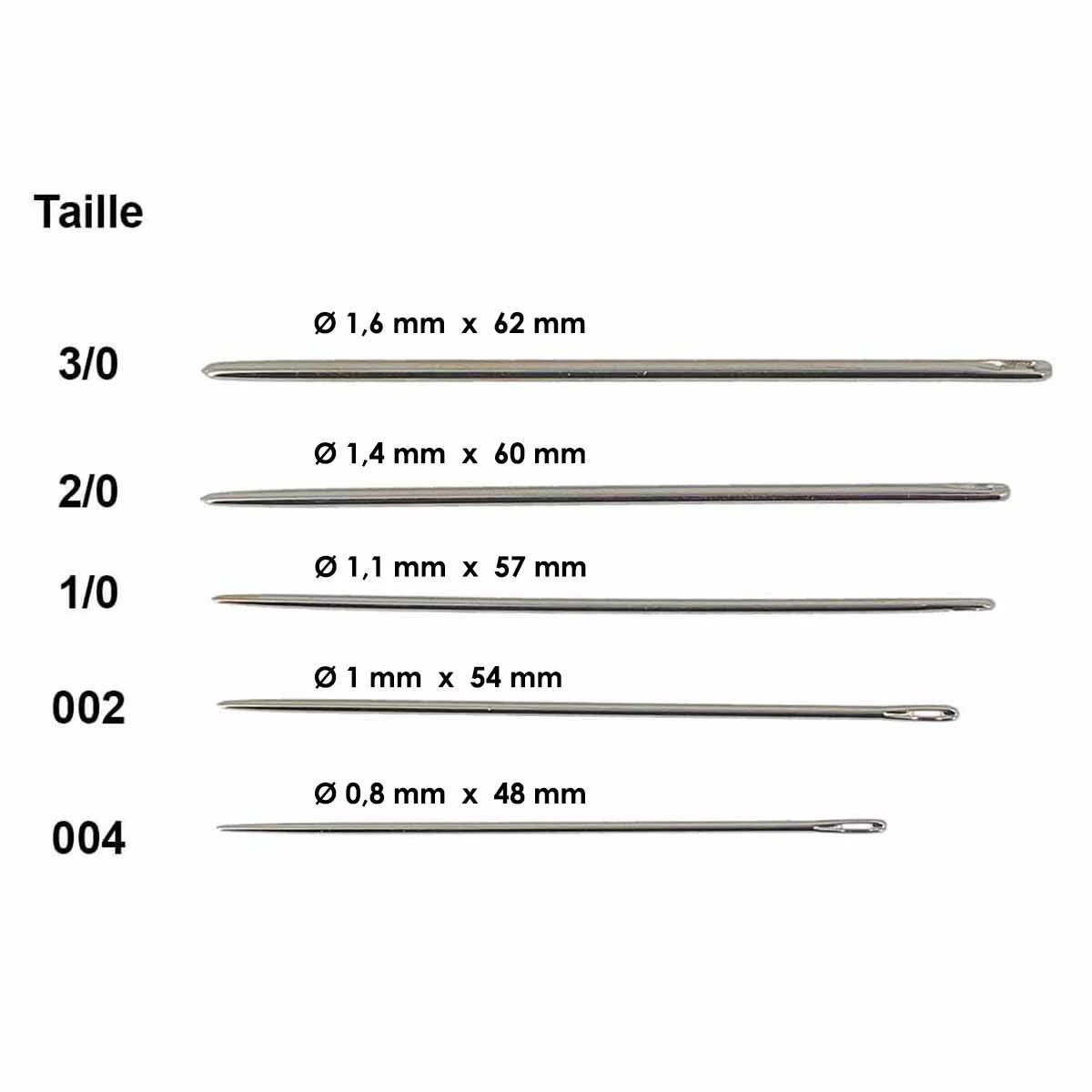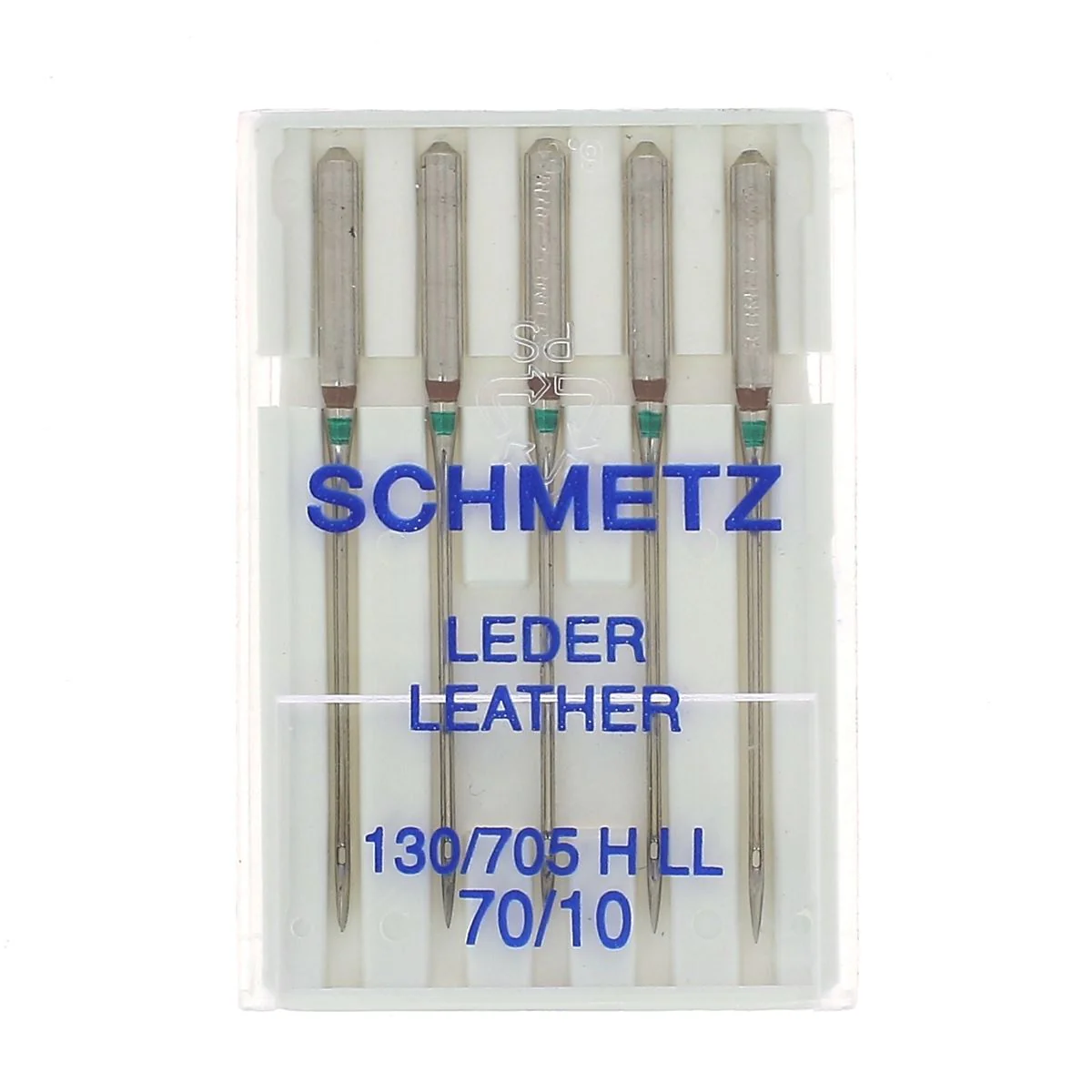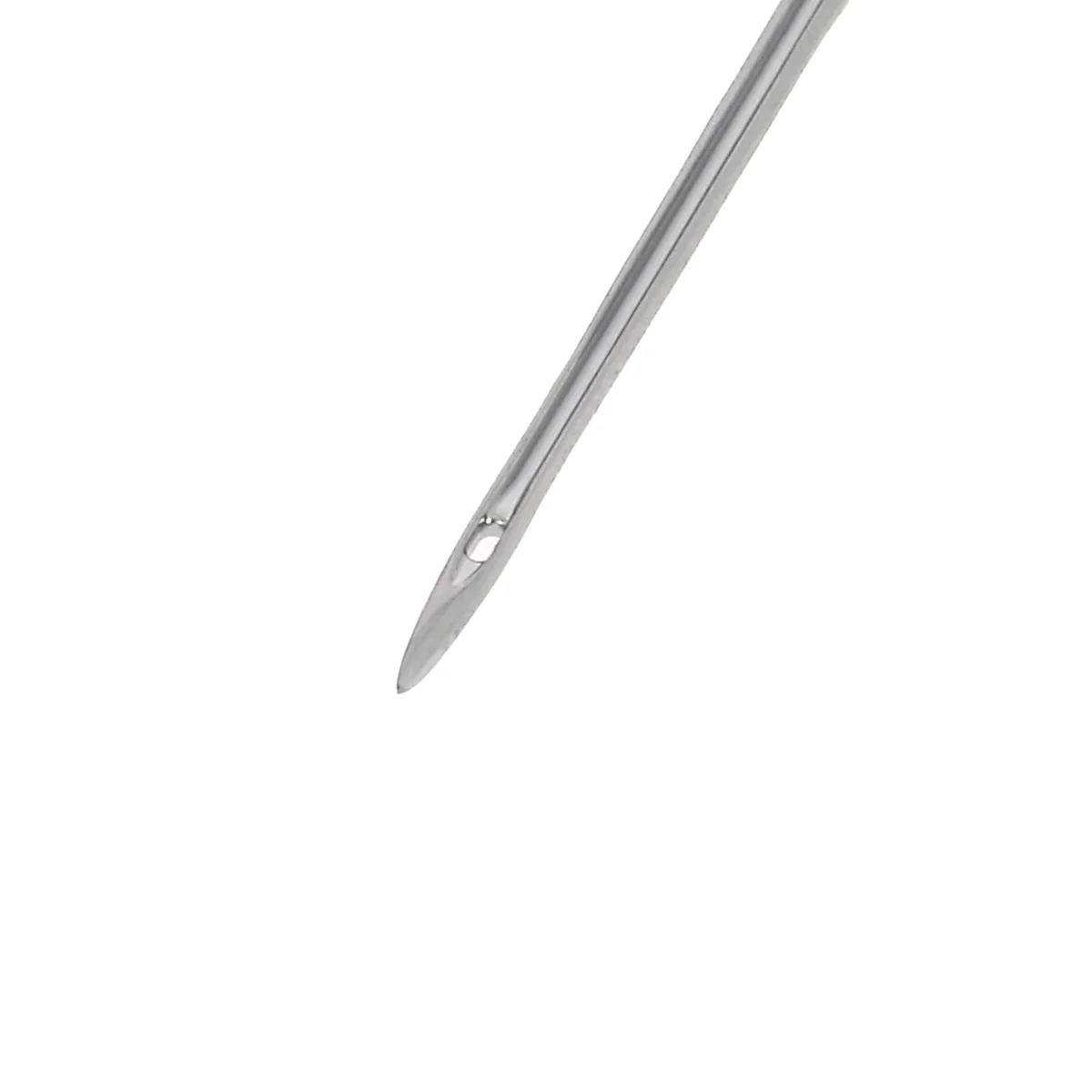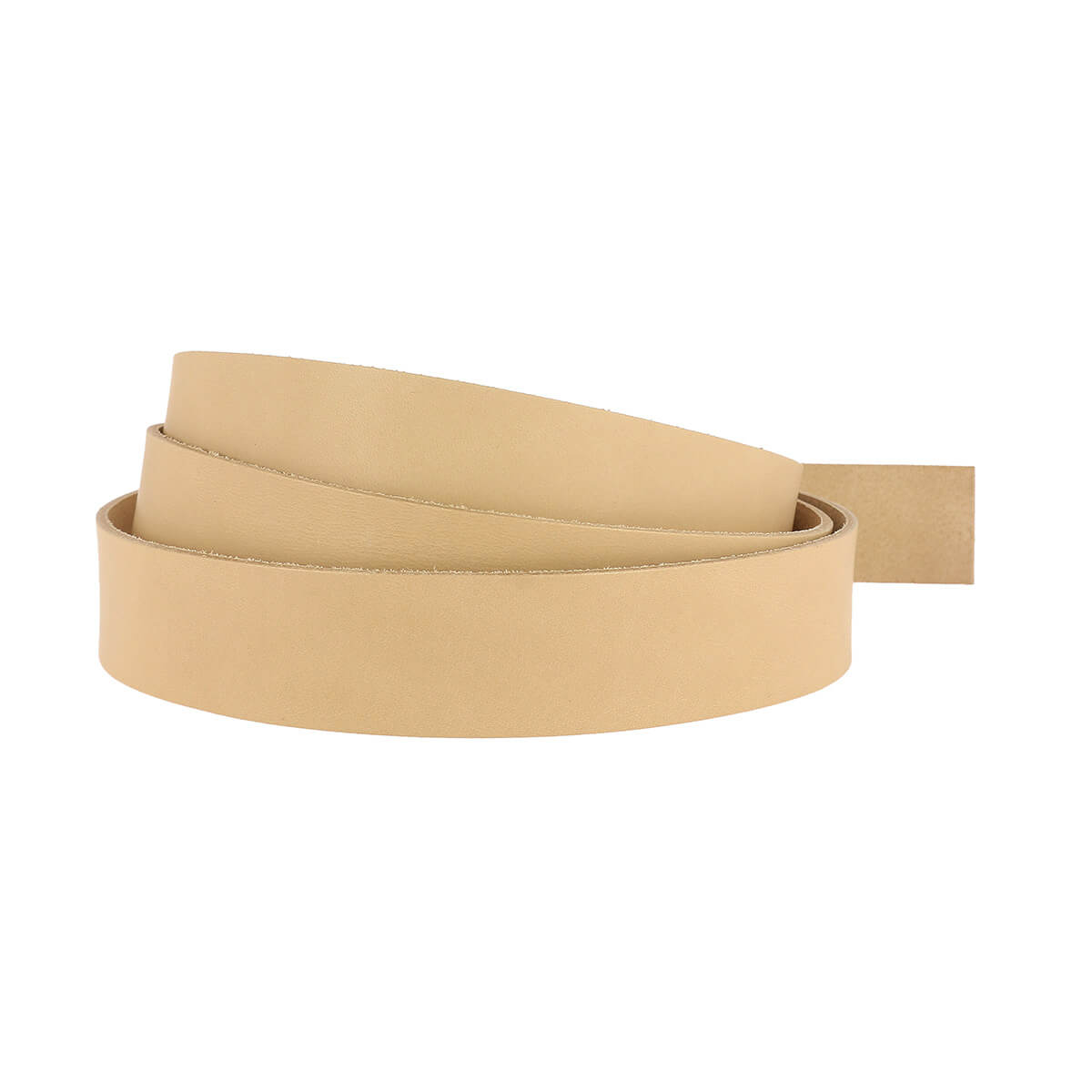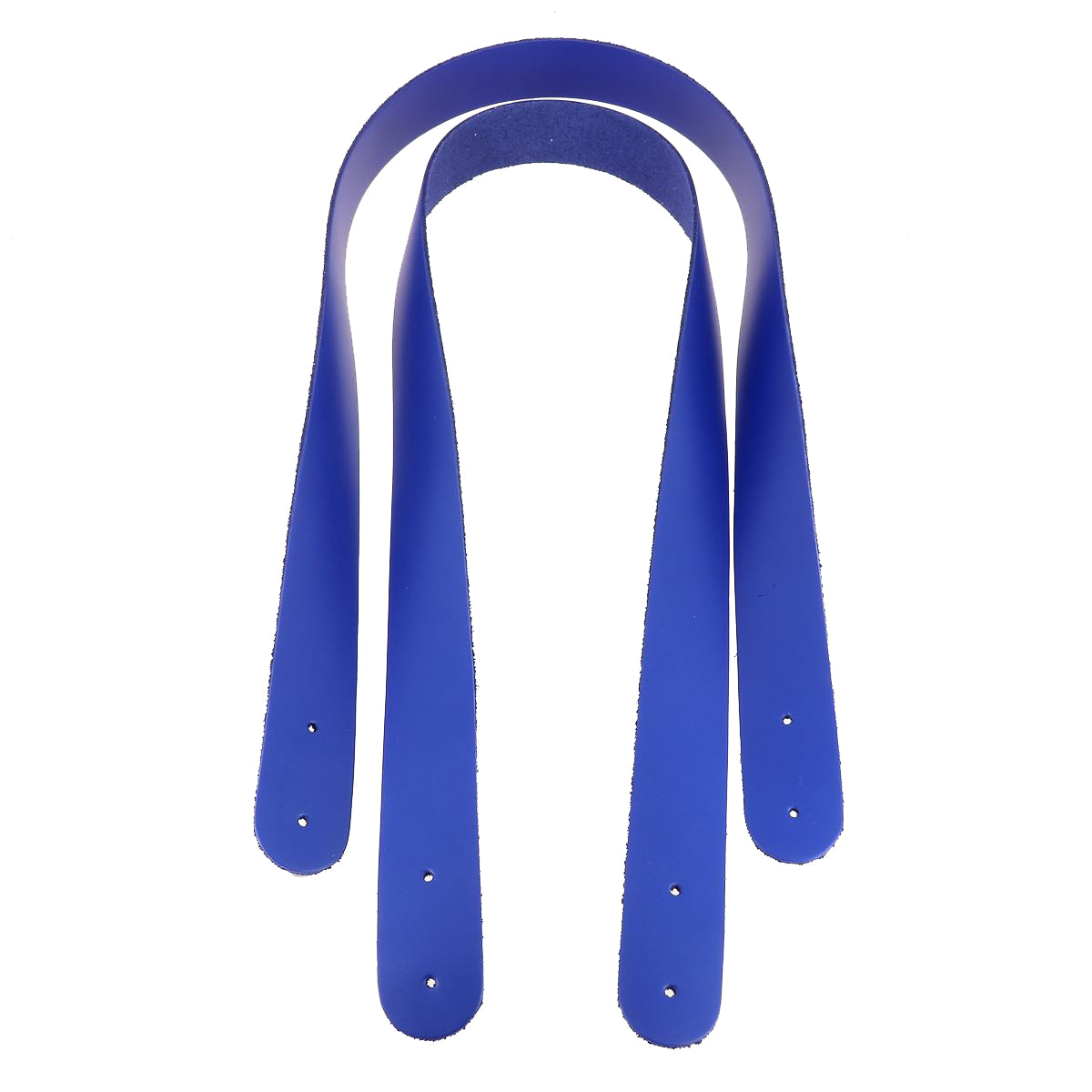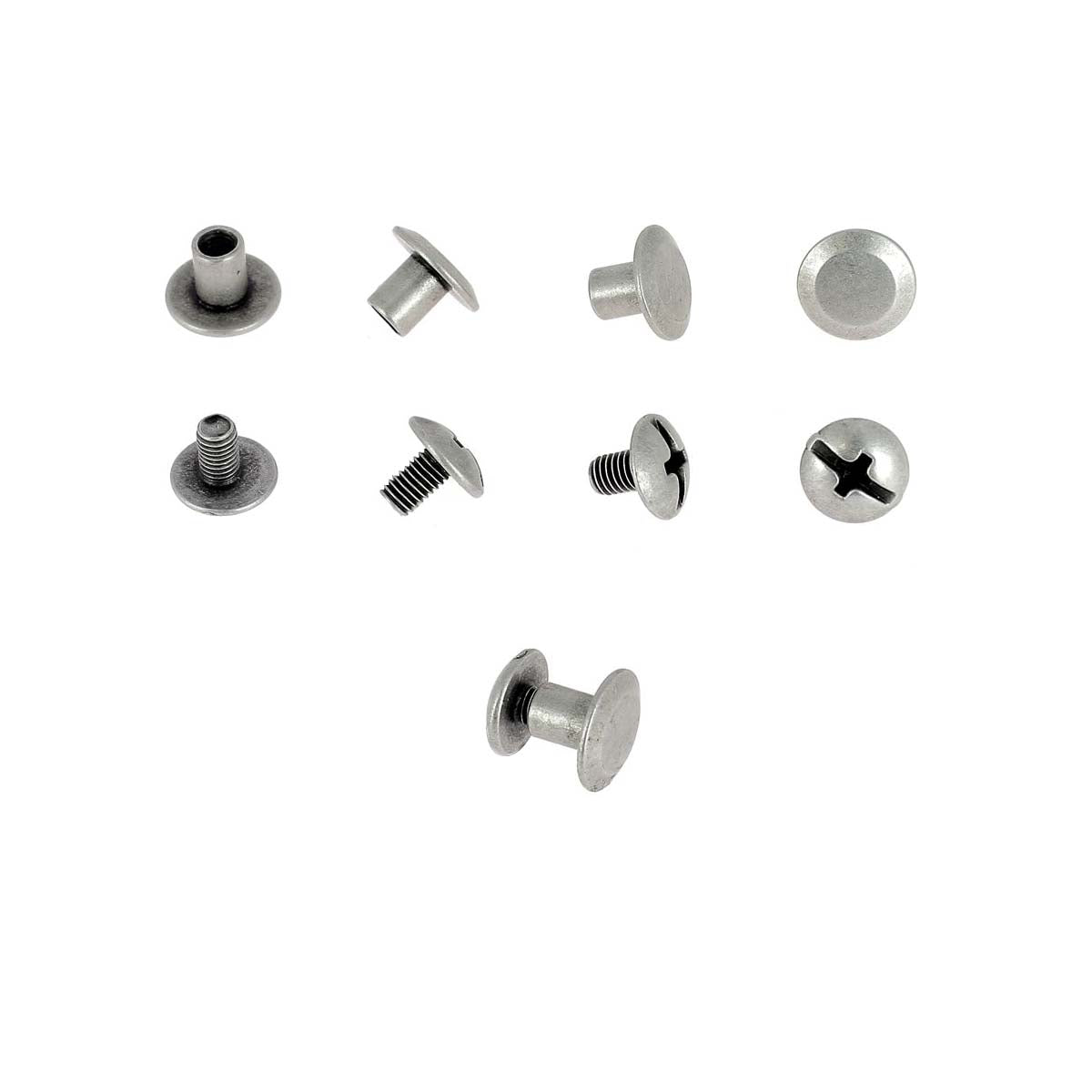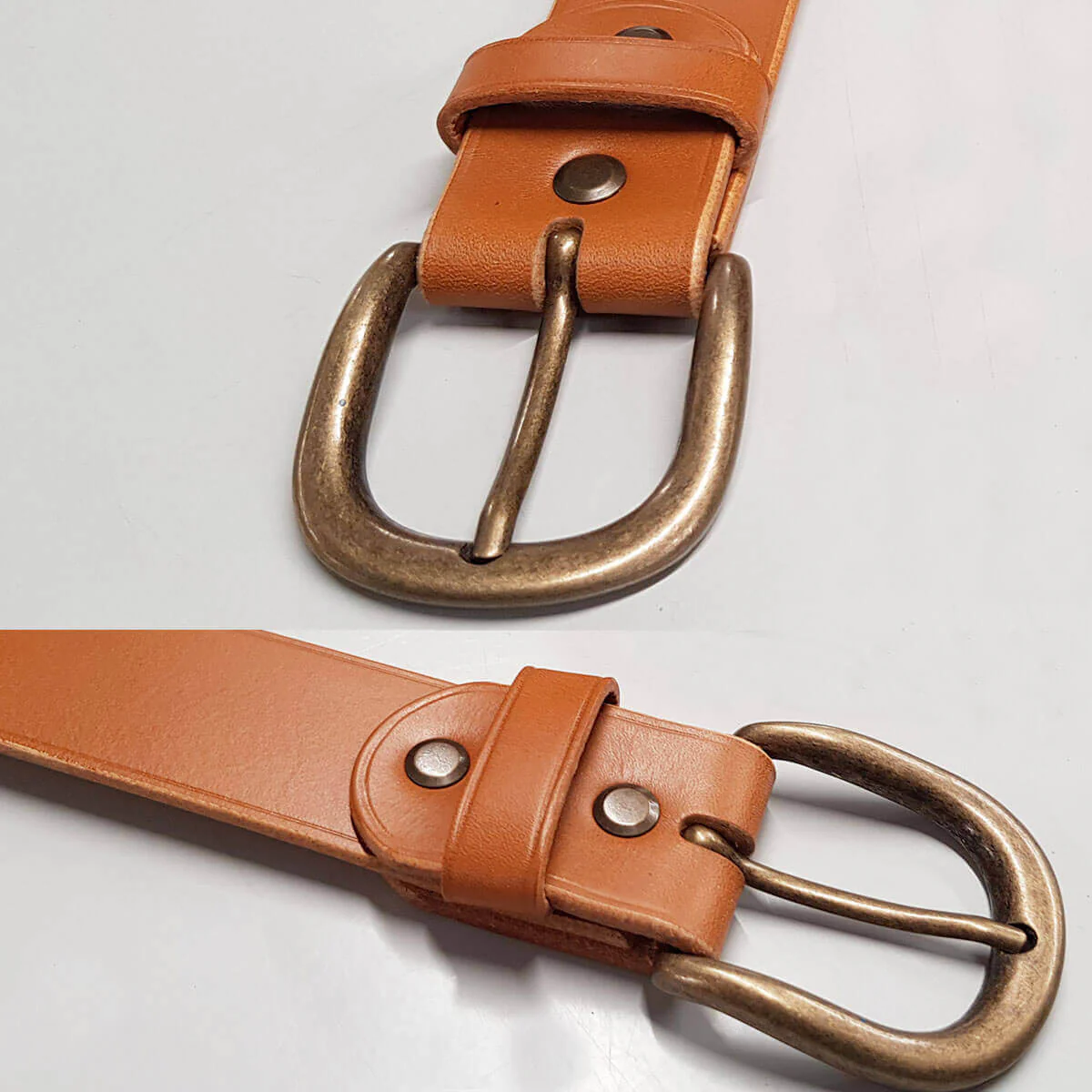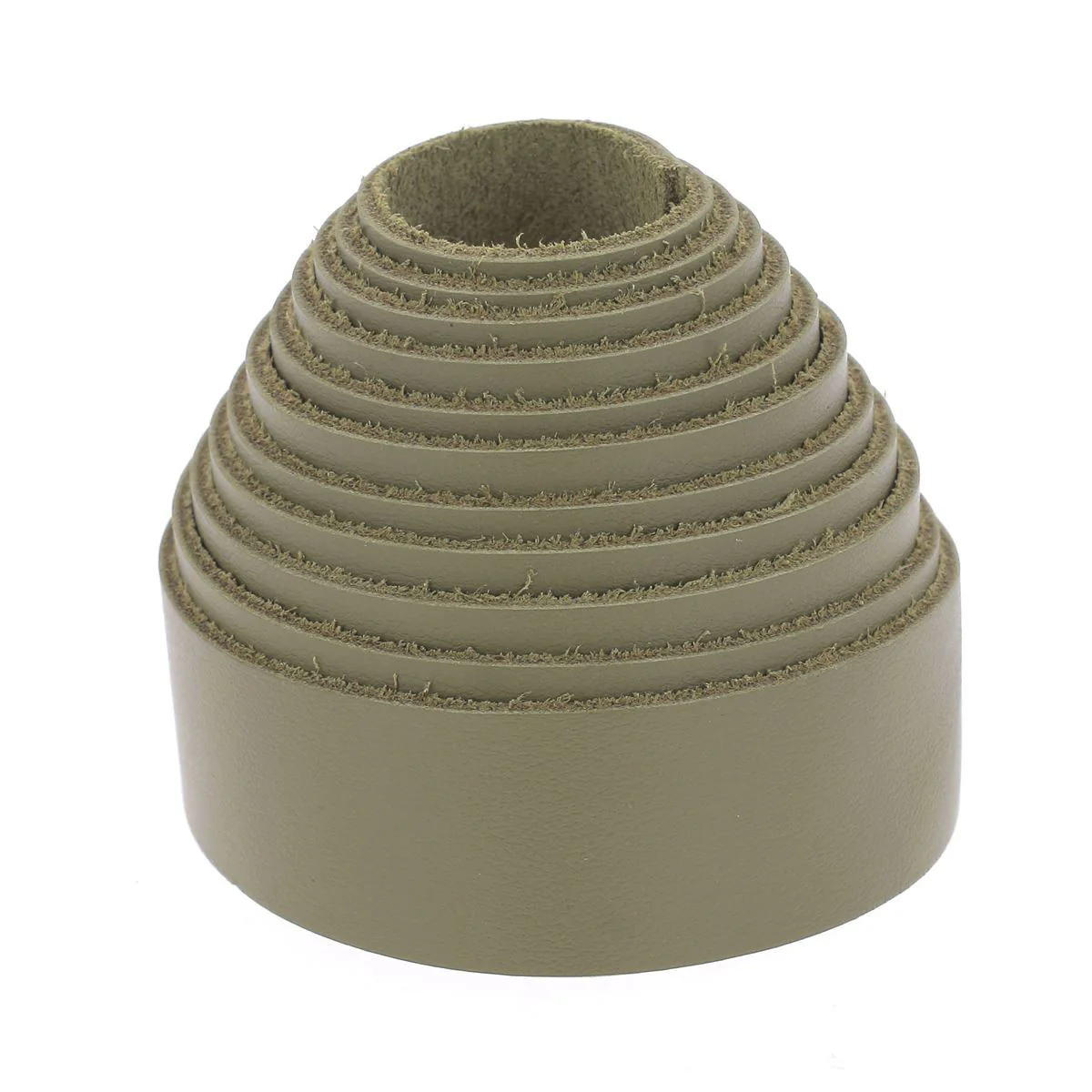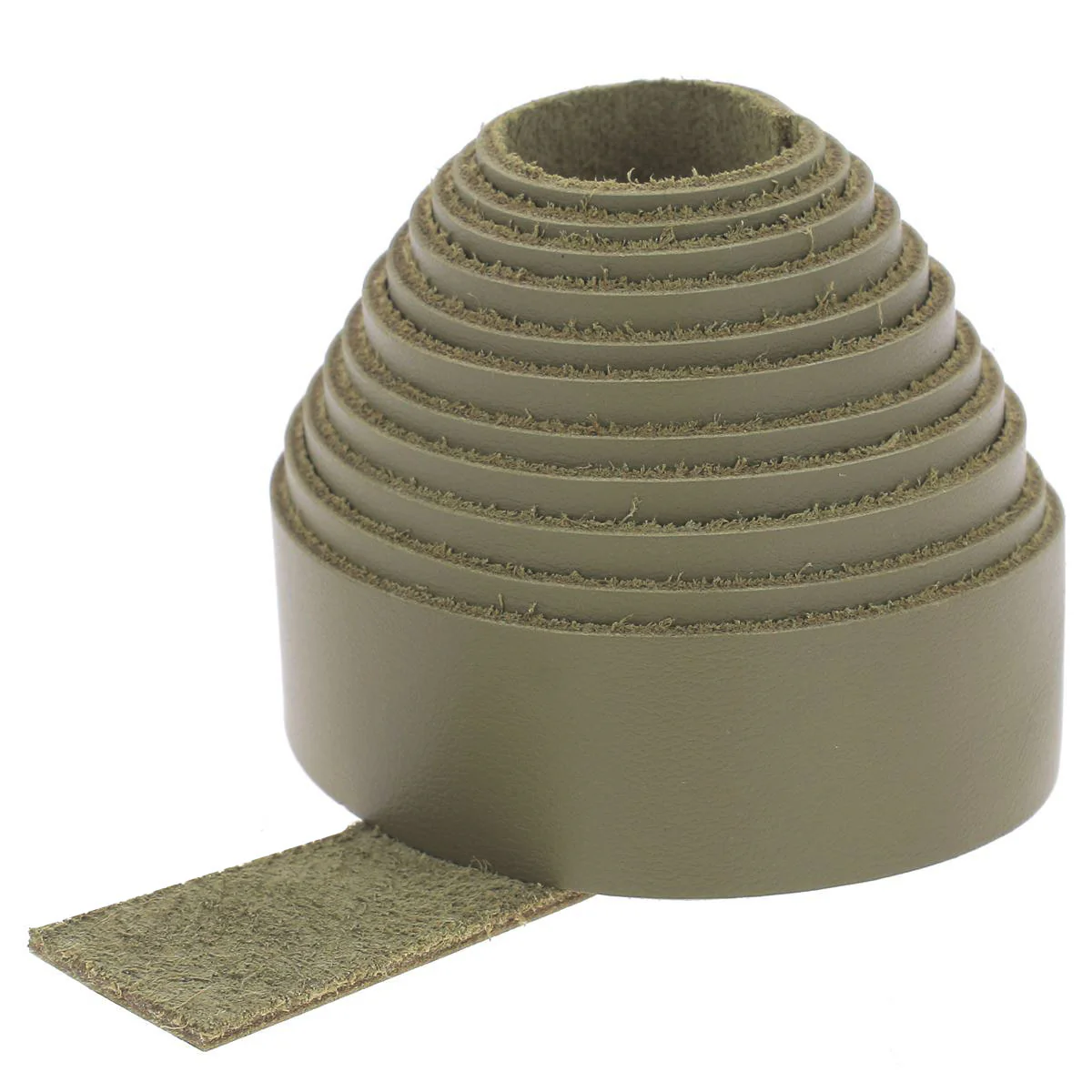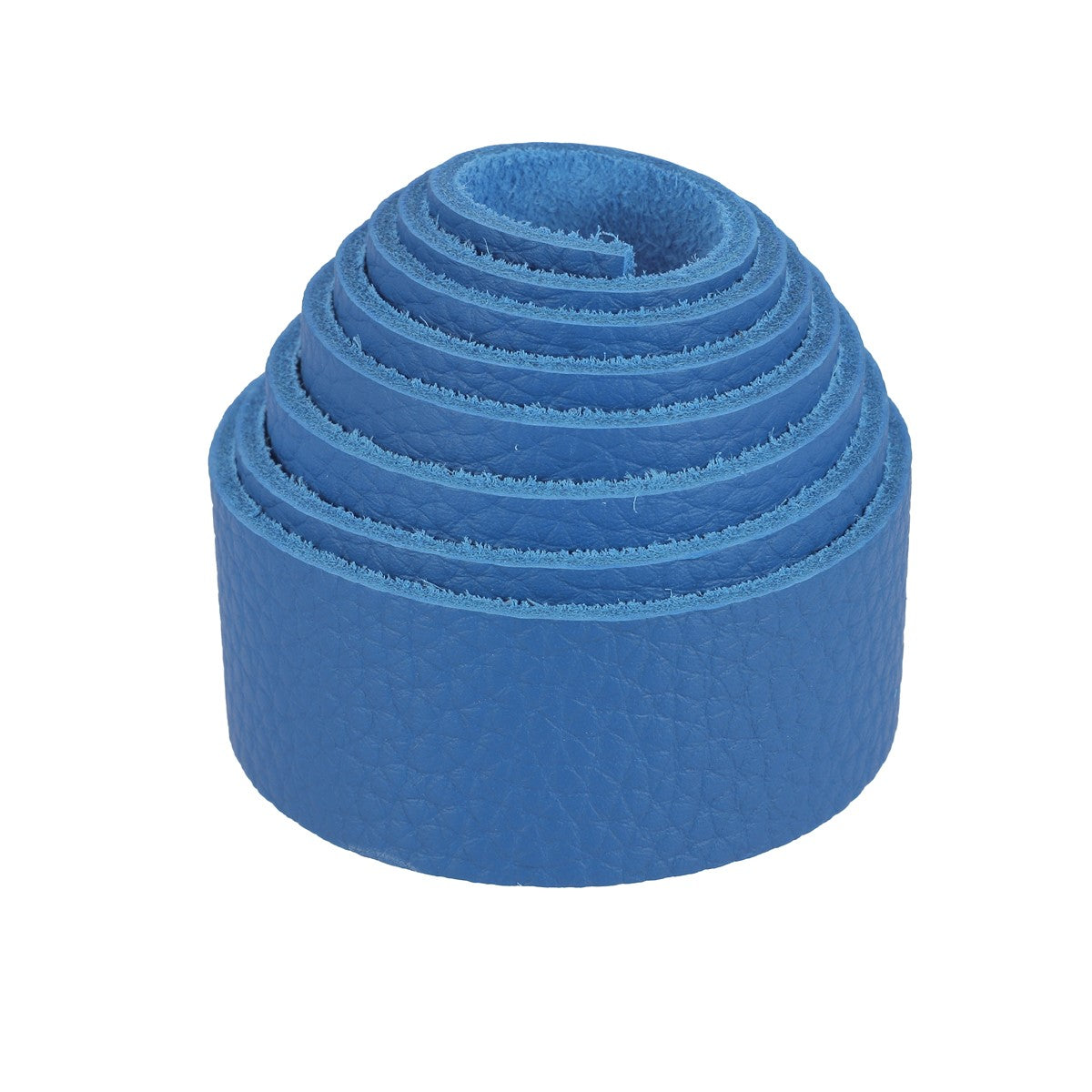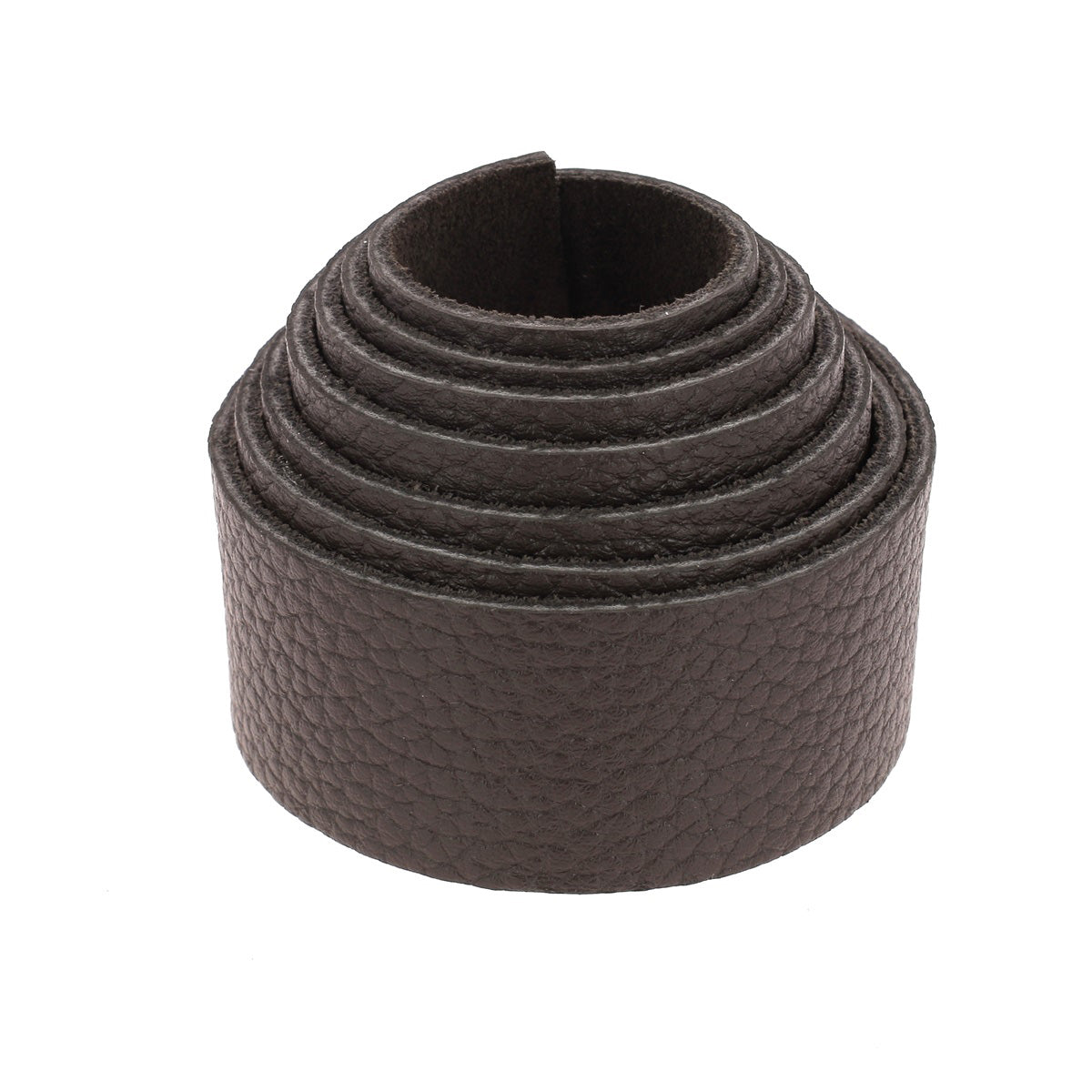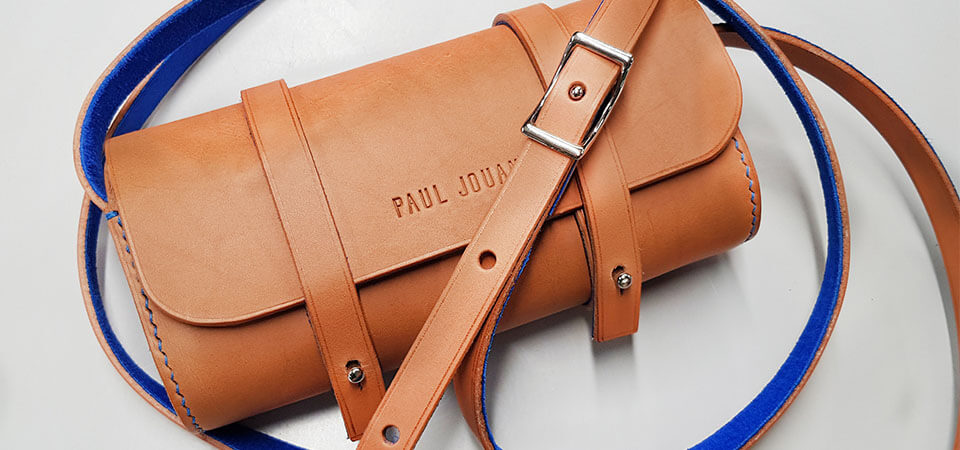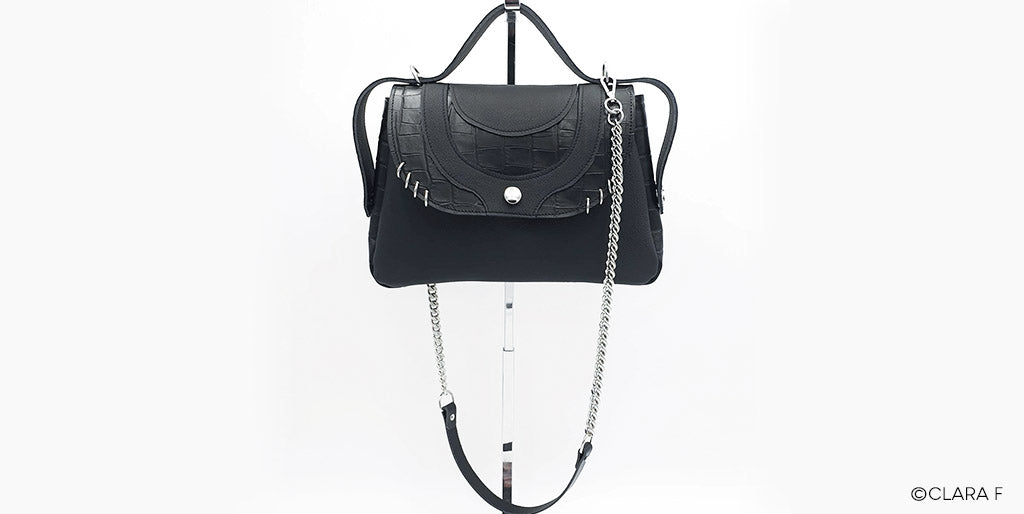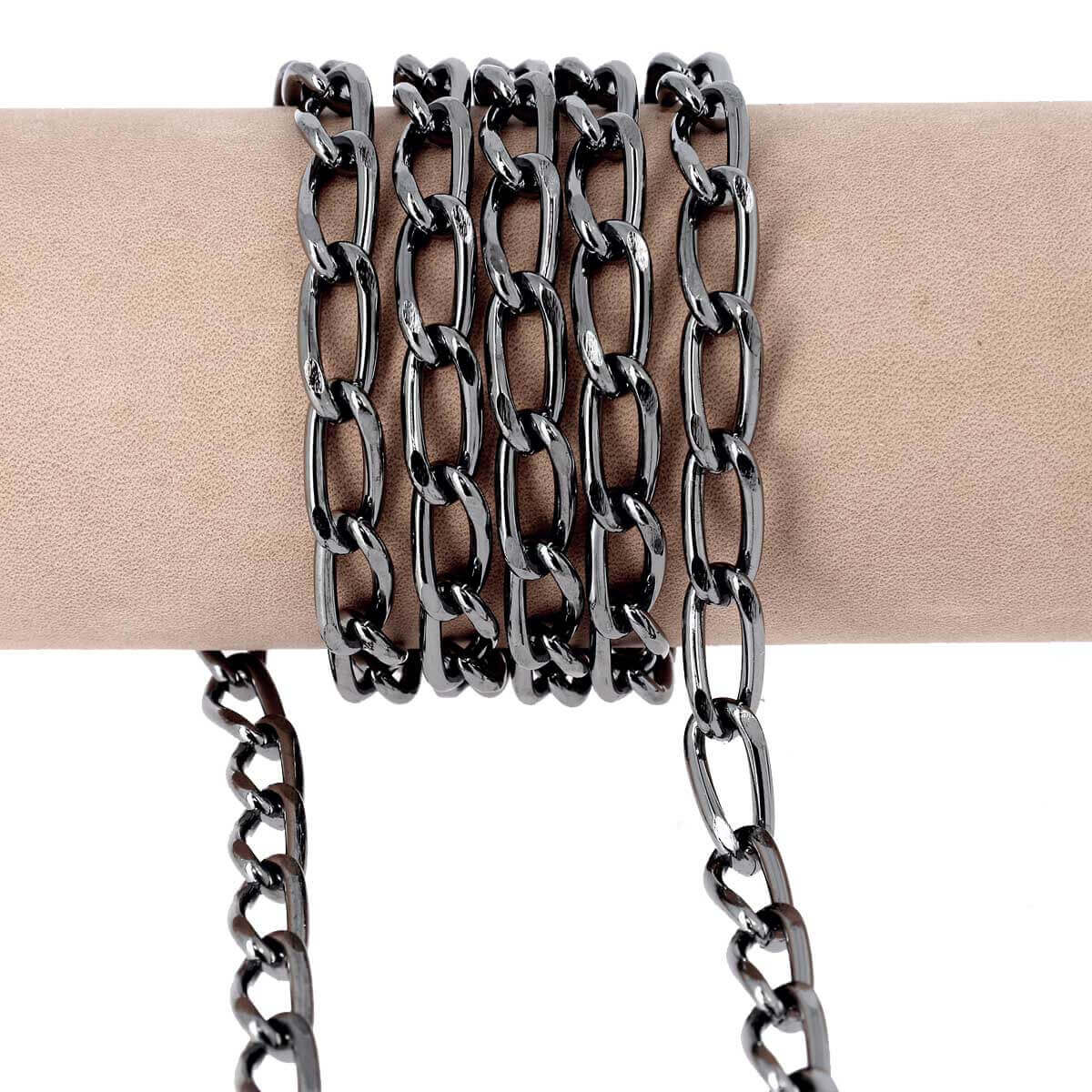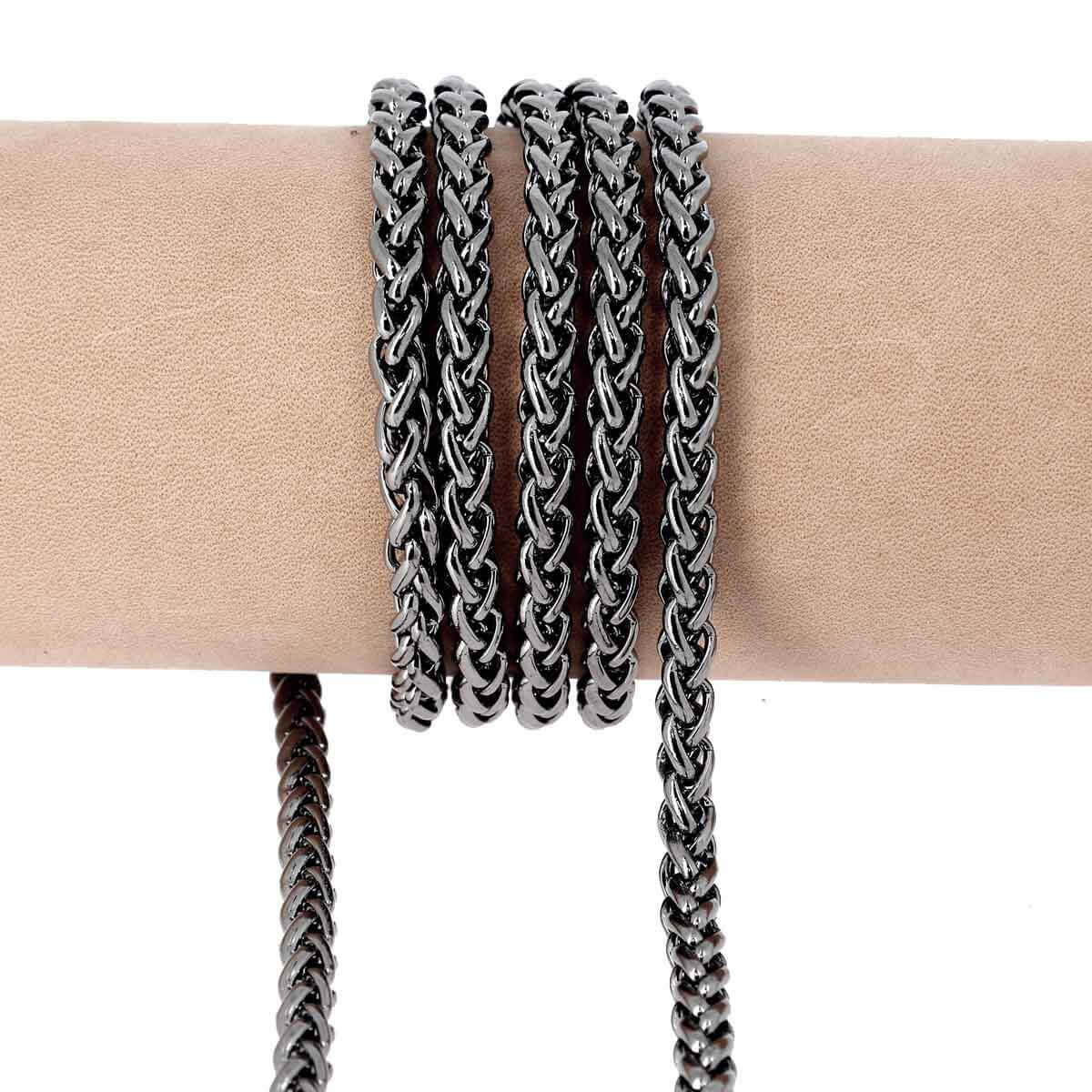How long is a leather bag handle usually?
Each bag handle is usually between 60 and 80 cm. They are perfect for carrying your bag by hand (60 cm) or on the shoulder (70 to 80 cm) .
What is the difference between a bag handle and a bag strap?
Unlike a pair of handles, a strap allows you to carry your bag across your shoulder. It has a length of between 100 and 120 cm.
Additionally, the handles are sewn onto the front and back of the bag, while the shoulder strap/strap is sewn onto the sides.
What is the average distance between 2 bag handles?
The distance is approximately 20 to 25 cm (outside to outside of the handles - see diagram).

We begin this guide by explaining how to sew and reinforce a leather bag handle to give it a nice sheathed appearance and therefore have a better grip on your bag.
The advantage of this technique is that you can have handles in the same leather as your leather goods creation!
How to reinforce a leather bag handle?
It is possible to reinforce/sheath a leather bag handle with strand.
A strand, also called a bead or rush, is a set of twisted threads to form a rope / cord. It provides strength and rigidity to round handles and grips. All our strands for bag handles are 100% cotton. We recommend a 6 mm diameter strand for small leather goods (e.g. small bag) , the 7 mm diameter strand for leather goods (e.g. tote bag) and the 8 mm diameter strand (and +) for larger creations (e.g. travel bag) .
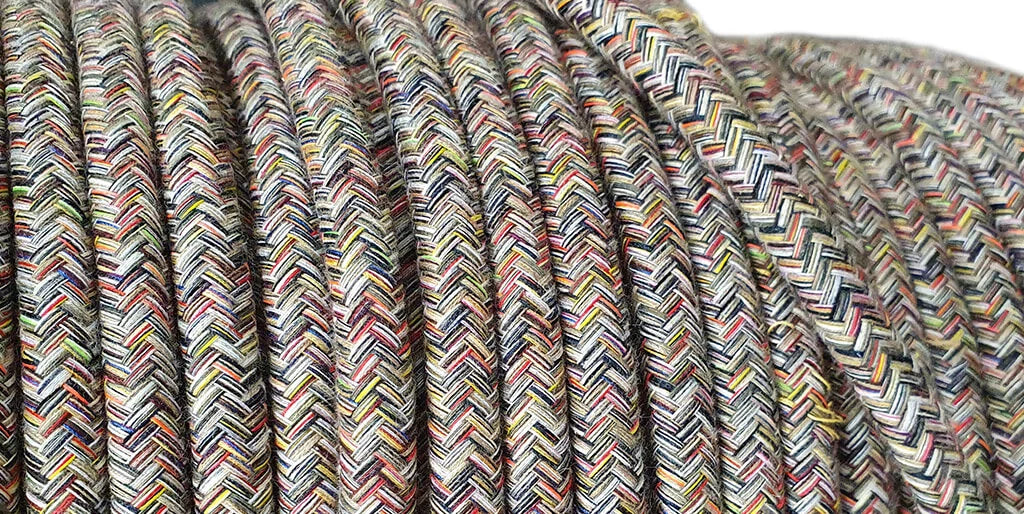
Do you know about sugherite?
Add volume to your belt, handles or bag handle with Sugherite reinforcement. It also provides strength and rigidity to the leather and gives a professional finish to your creation.
Which leather should I choose to make a handle?
We recommend a fairly soft leather of 1.2 to 1.8 mm thick. You can definitely make handles in vegetable tanned or mineral tanned leather. The main difference will be the resistance. If you choose vegetable tanned leather it will be firmer and more resistant. This leather can also be cut with a strap cutter. If the leather is very soft, you will have to think about reinforcing it with tear-proof tape and it will not be possible to cut it with a strap cutter (you will still have the ruler + cutter method 😊 ) .
Finally, you can also opt for our flexible straps (ex GROGRAIN) sold in several lengths and widths. Generally their thickness is around 2.5 mm. They are perfect for making pretty handles.
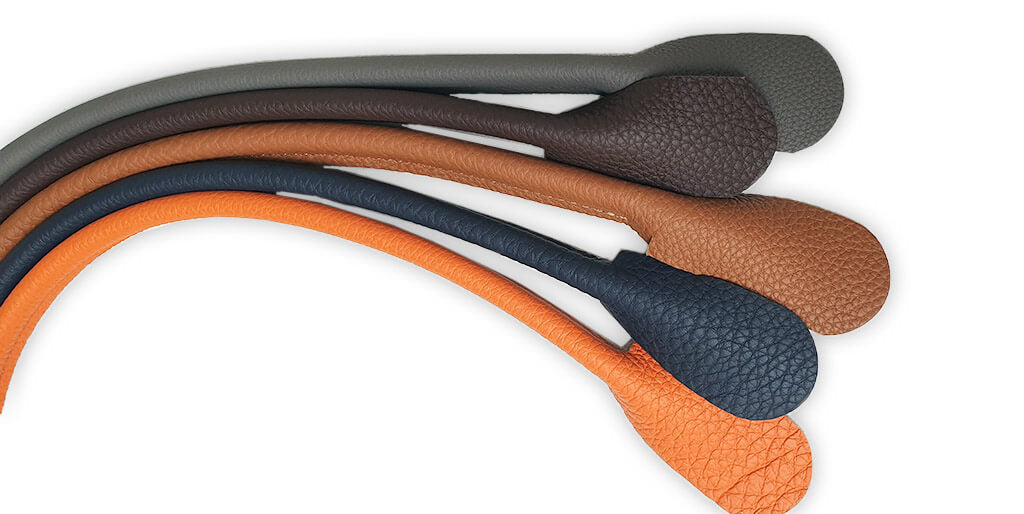
ROUND LEATHER HANDLE TUTORIAL
Here we go, we're going to explain how to sew and attach a leather handle: saddle stitch sewing, simplified sewing (with holes) and machine sewing.
Reminder: the handles are always mounted on the body of the bag before sewing the lining.
SADDLE STITCH SEWING
To be able to do the technique with a saddle stitch of leather, you must master the stitch. We advise you to go see our complete guide on this method.
VIDEO TUTORIAL: MAKE A PAIR OF LEATHER BAG HANDLES
The tubular handle brings a sophisticated touch to your leather goods creation, it is the detail that will change your whole bag. The strap holds straight on the body of the bag and the strand is invisible. For this tutorial we chose a strand with a diameter of 7 mm.
1- Cut two strips of leather for the pair of handles
Cut two strips 4 cm wide and at least 60 cm long. Use a strap cutter for firm leathers or a ruler and cutter for soft leathers.
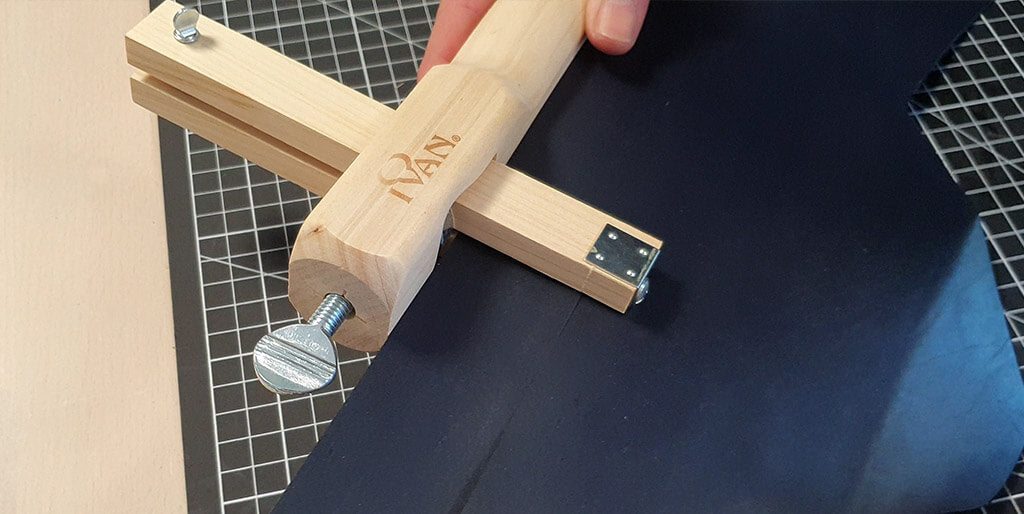
2- Work the ends of the handles
Let your creativity run wild with the shape of the ends of the handles: rounded, ogive, trapezoid... We have chosen to only round the corners (radius 10 mm).
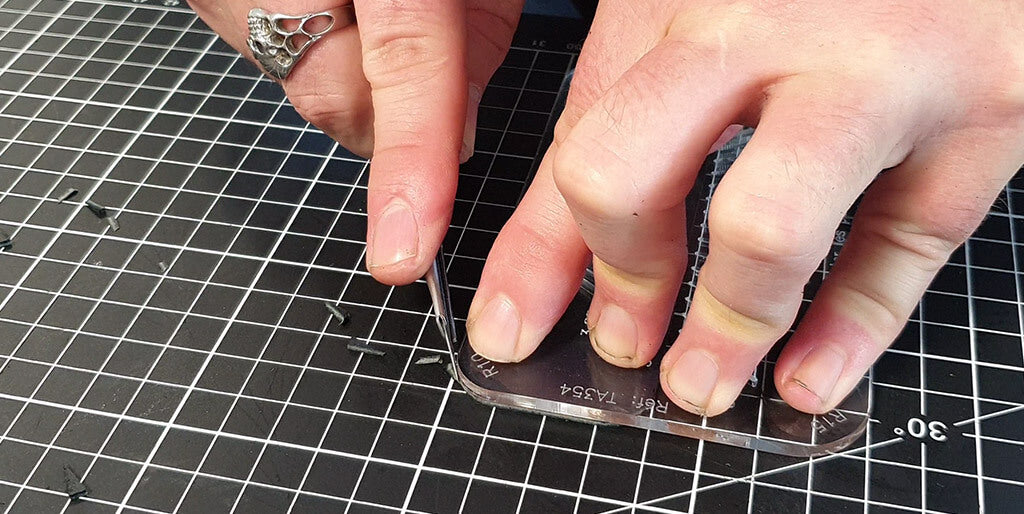
3- Cut, trim and glue the strand
At each end, make a first mark at 4 cm to identify the stop of the bonding (dimension equivalent to the width of the strip) . Make a second mark at 5 cm for the position of the strand. The strand will not be visible.
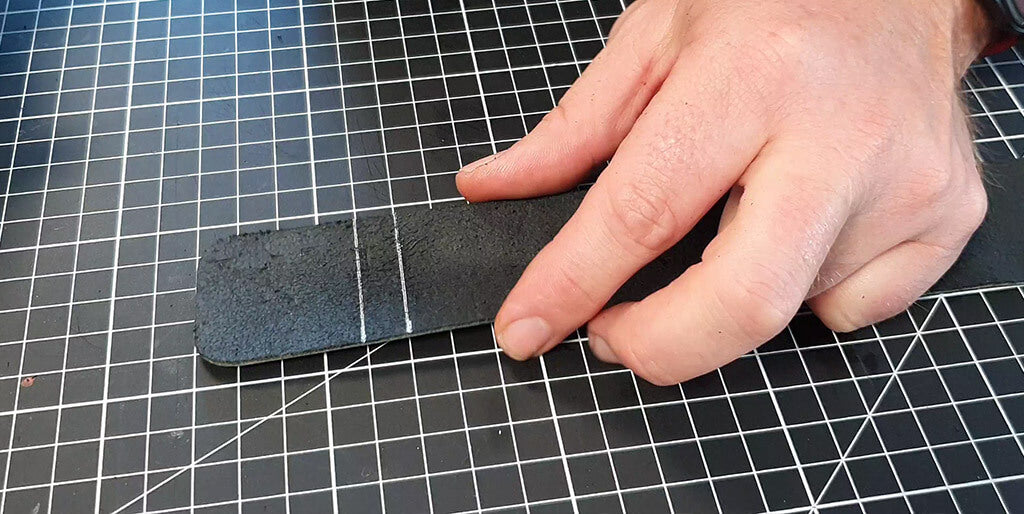
To know the necessary length of strand, take the measurement between the 2 lines made 5 cm from each end. For a 60 cm handle, you will need 50 cm of strand.
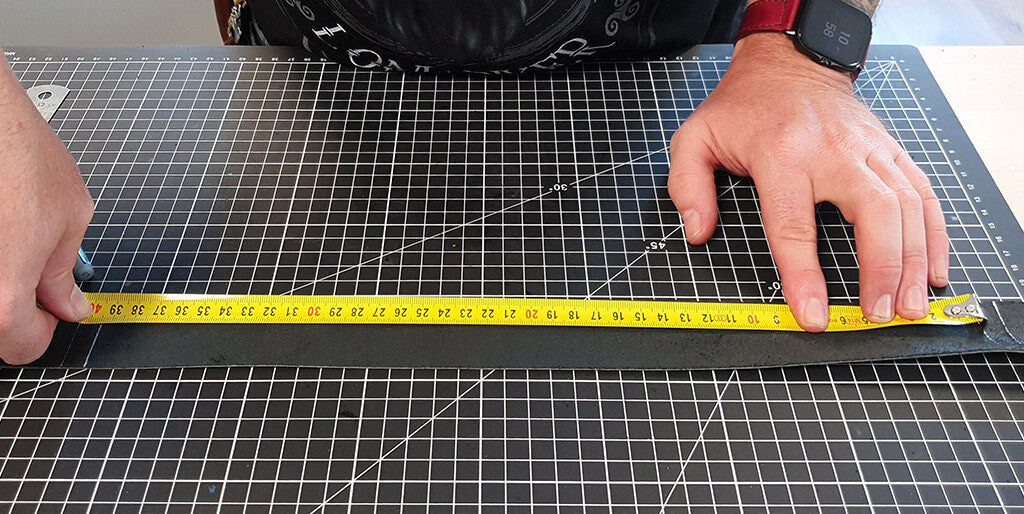
Place masking tape on each end of the strand to prevent it from disintegrating and to be able to trim it.

Make a mark at 1.5 cm for trimming. Then trim the strand. The goal is to have a point about 1.5 cm long. Be careful to trim on the same side on both ends.
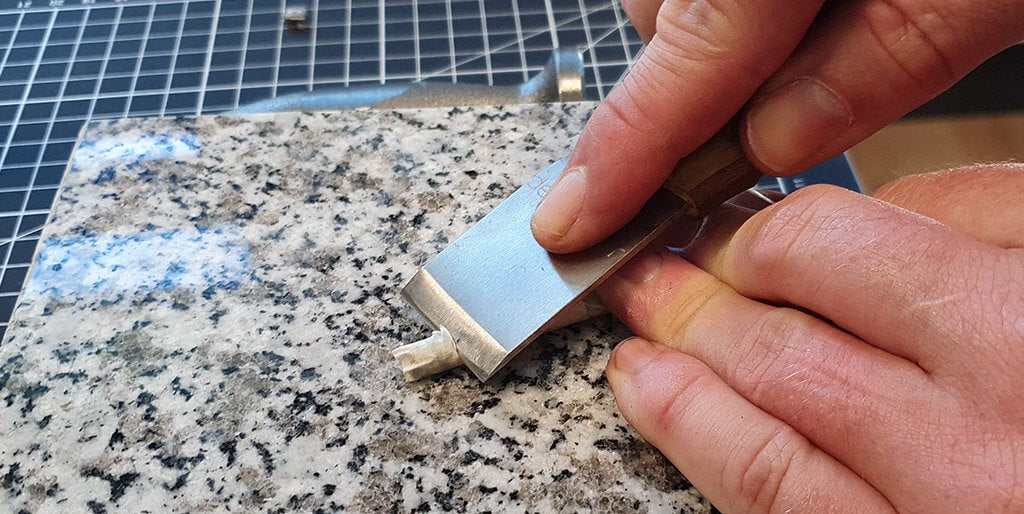
Make a mark in the center of the strip before gluing the strand. Then apply contact glue to the leather crust and the strand to position it. It is important to center your strand well to avoid having a "zigzag" seam.
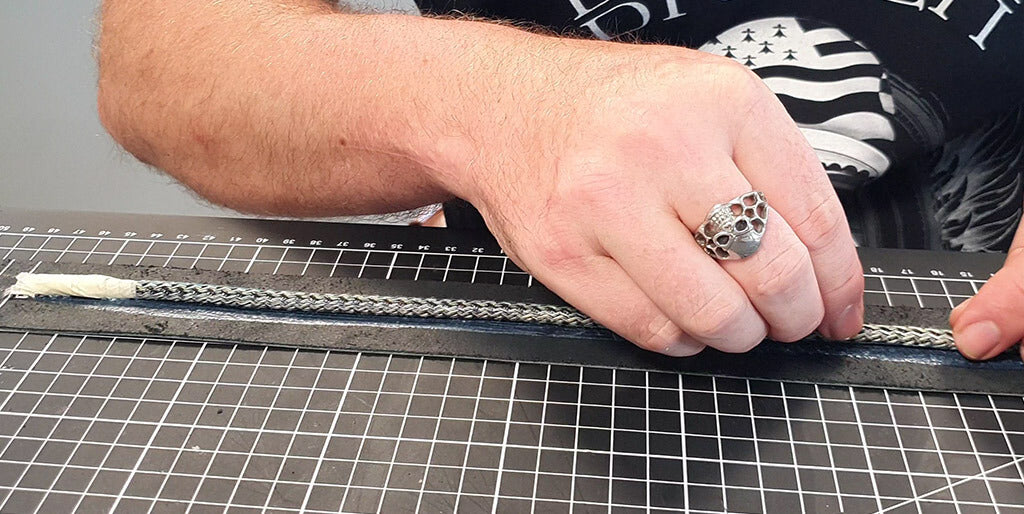
4- Fold the leather over the strand to form the handle
Apply leather glue to the entire strip and strand. Wait a few minutes for the glue to soak in. Then start gluing from the center to avoid any shifting.
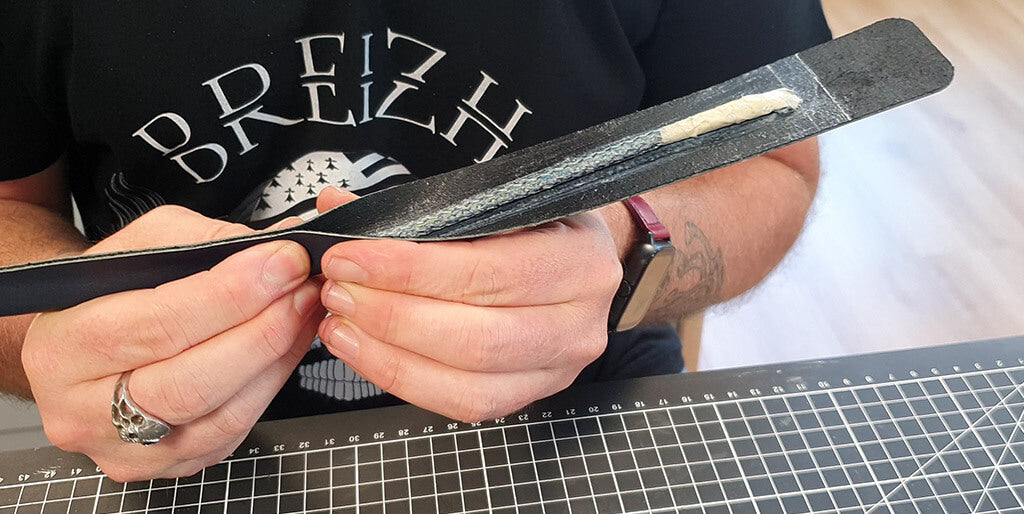
5- Form the handle and score the seam line.
Use a smoothing tool to tighten the strand and mark the stitching line. Mark the stitching points with a mallet and a striking claw. The aim is not to pierce the leather completely but only part of its thickness.
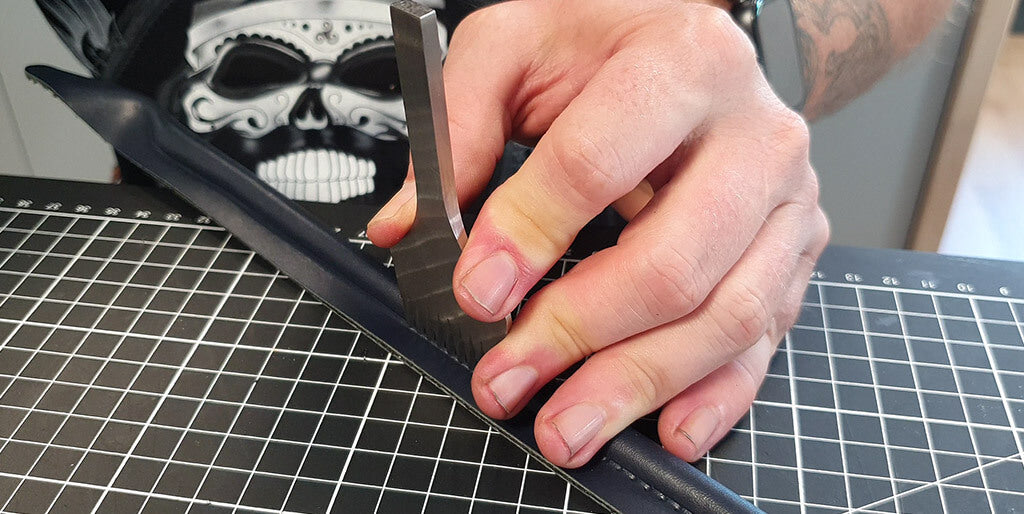
6- Sew with saddle stitch
Sew the handle with a saddle stitch. Finish the seam with 2 knots (on the inside) .
SEE THE SADDLESTITCH SEWING GUIDE >
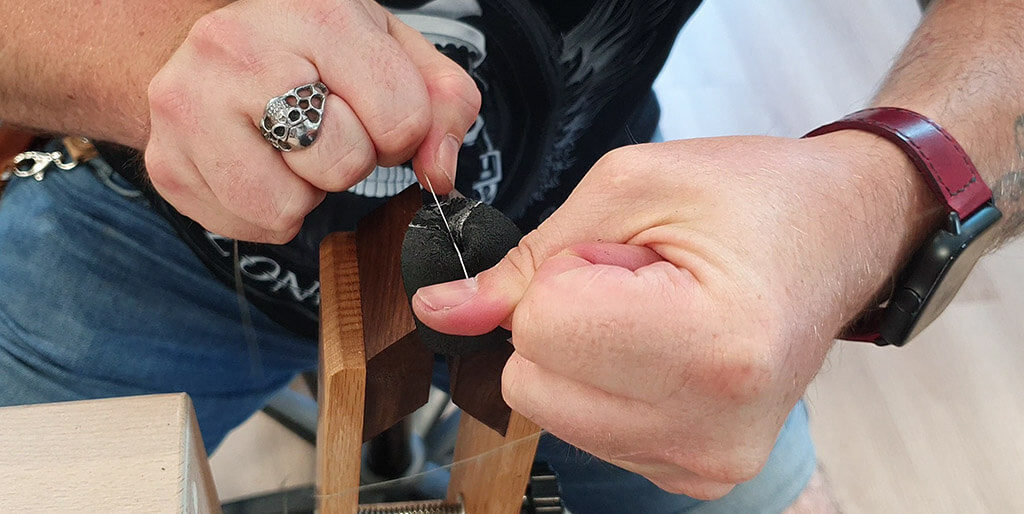
7- Cut the leather handle
Using a dry point compass, make a mark 3-4 mm from the seam line. Then pierce 2 half-circles at each end of this mark. Then overcut with a cutter or slicing knife.
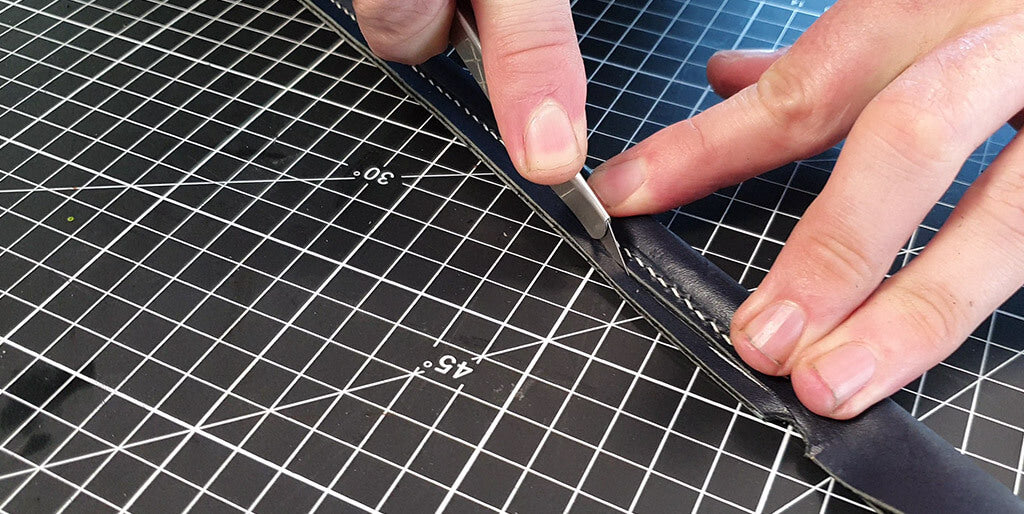
8- Work the slices
Sand the edges then apply at least 3 coats of edge finish, sanding between each coat.

9- Scratch the ends of the handles
On each end, draw a stitching line 3-4 mm from the edge. Then mark the stitching points (do not pierce the leather completely).
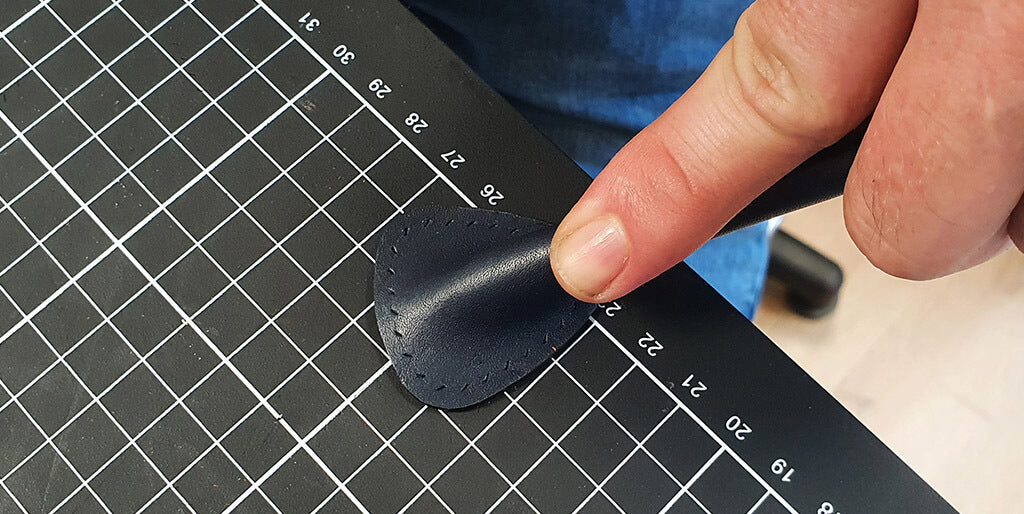
10- Glue and sew the handles onto the body of the bag
Pass a thread through a stitch at each end of the handle and tie a knot. This allows you to always have the same gap when gluing: between 20 and 25 cm.
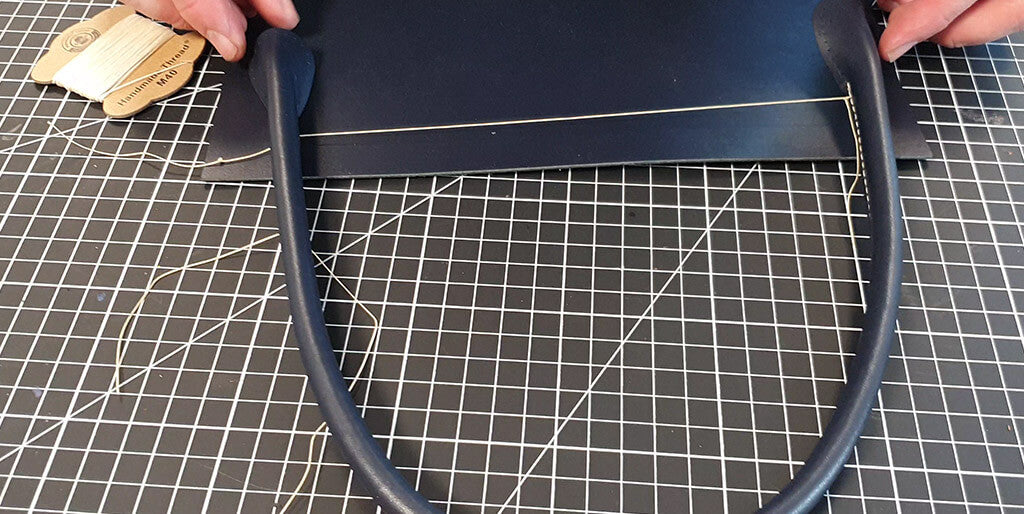
Then mark the position of the handles on the body of the bag. Scrape the grain of the leather to facilitate the adhesion of the glue. Glue the handles and sew with a saddle stitch. Finish the seam on the lining side by making 2 knots.
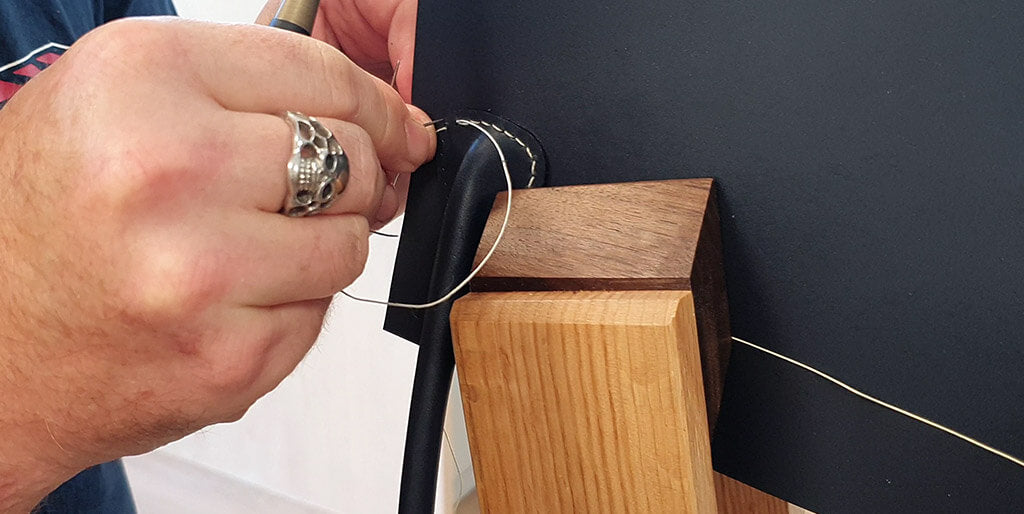

SIMPLIFIED SEWING (WITH HOLES)
This technique is for anyone who has not mastered saddle stitch sewing. The so-called simplified sewing consists of piercing/marking the stitches using a round punch. This "hole" and straight stitch sewing is ideal for beginners.
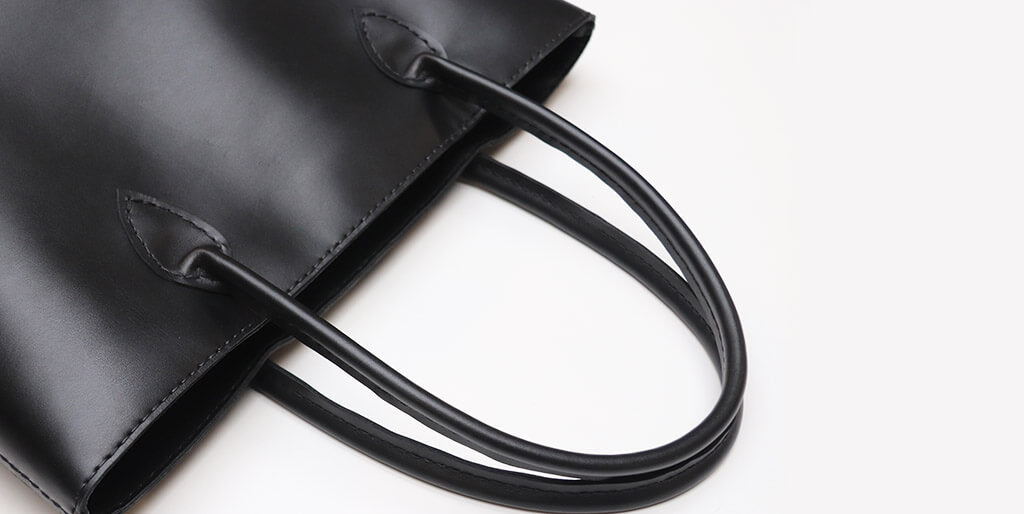
SUPPLIES
- 1m50 of 7 mm diameter strand
- 1 Seiwa cookie cutter ⌀ 0.90 mm
- 2 needles size 2/0
- Braided and waxed polyester thread ⌀ 0.80 mm
- Neoprene or water-based glue for leather
ASSEMBLY STEPS
The handles are approximately 64 cm long.
1- Download the PDF pattern below for the pair of leather handles and print it twice in actual size.
2- Cut out the pattern, leaving about 1 cm of margin around the pieces. Assemble the pattern and stick it to the grain of the leather using masking tape (to avoid damaging the leather) .
3- Punch the sewing holes indicated on the pattern with a round punch cutter of ⌀ 0.9 mm
4- Following the lines, cut out the 2 pieces of leather with a cutter.
5- Take the necessary length of strand (approximately 52 cm). You must remove approximately 6 cm at each end (the strand stops before the ogive end at the level of the 2 central points).
6- Put glue on the entire handle (except the ends) and position the strand in the center (don't hesitate to make marks) . Then put glue on the strand.
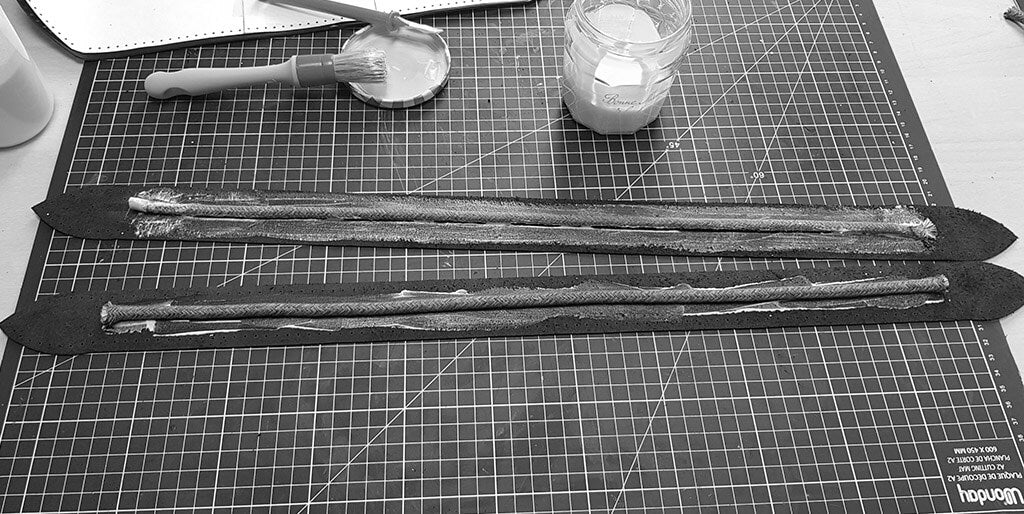
7- Wait a few minutes for the glue to soak in and fold the handle over itself. Then flatten the glue with a small smoothing tool or roller.
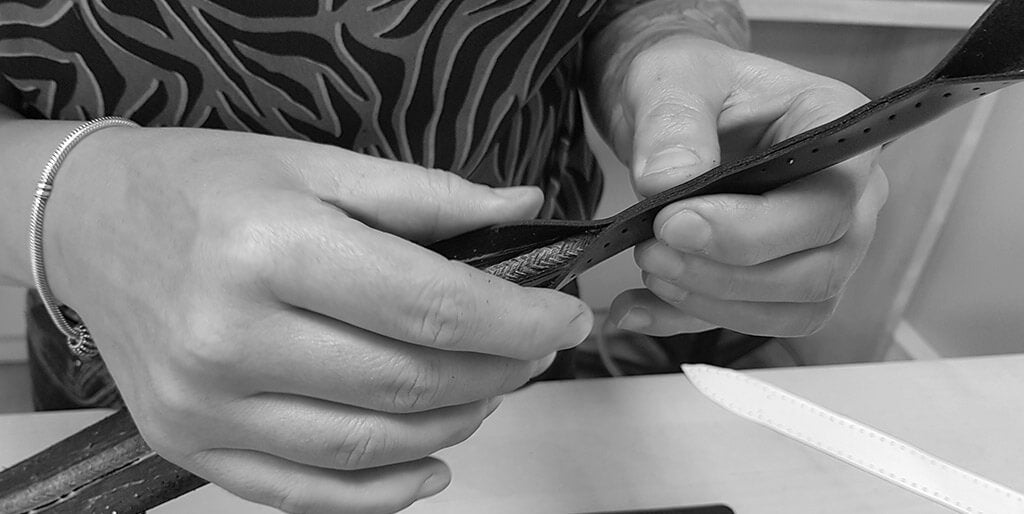
8- Sew the handle. Cut a thread 5 times longer than the length to be sewn. Thread a needle at each end of the thread. To start sewing: pass the thread through the first hole and even out the threads. Sew by passing each needle through each hole one by one. Finish sewing by taking the thread out into the edge, making a knot and cutting the thread flush. To learn more about “simplified” leather sewing, see our guide.

9- Work the slices with a slice finish. Apply at least 3 coats of paint and sand between each coat.
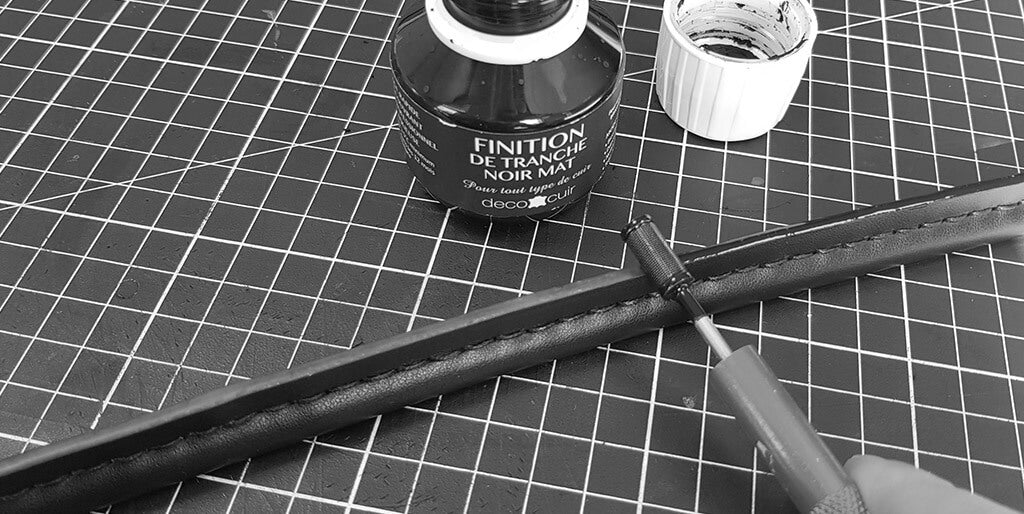
TADAM ⬇️ 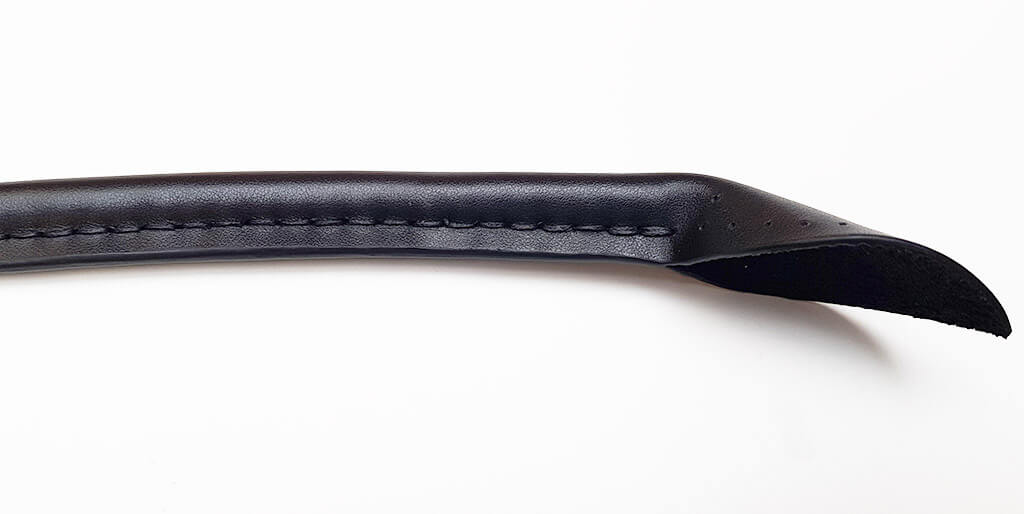

SEE THE BAG TUTORIAL >
BAG HANDLE MACHINE SEWING
You are not a fan of hand sewing and you have a sewing machine that accepts thicknesses? We explain how to sew a leather handle by machine!
LEARN MORE ABOUT MACHINE SEWING LEATHER >
VIDEO TUTORIAL LEATHER HANDLE - MINUTE 13:22
Since for machine sewing it is necessary to favor soft and not very thick leathers, the ends of the handles must be reinforced with tear-proof tape and doubled (on the ends) with leather of approximately 0.8 mm thick. 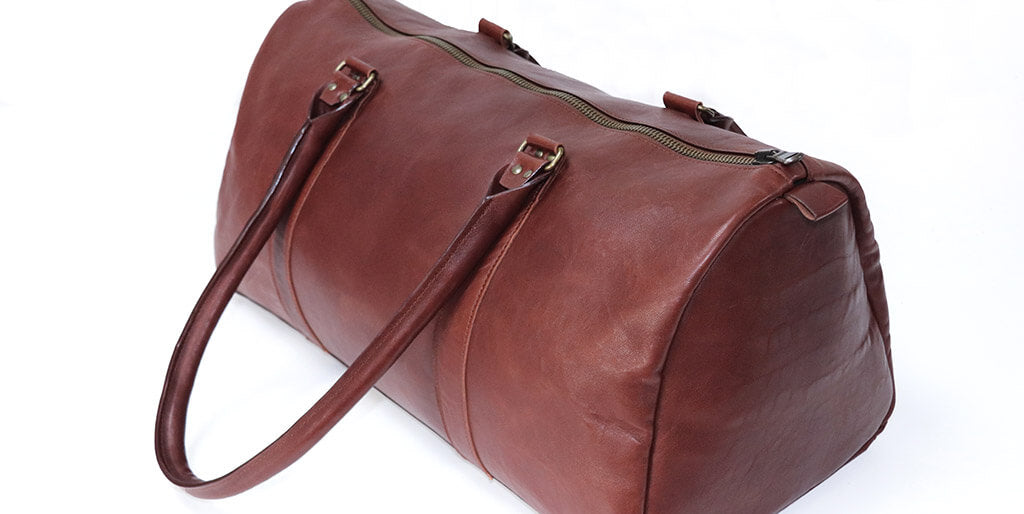
In addition, with a machine seam it is very difficult to sew the handle directly onto the body of the bag, so you have to make leather covers. The covers allow you to attach the handle to the handbag using a rectangular or round loop.
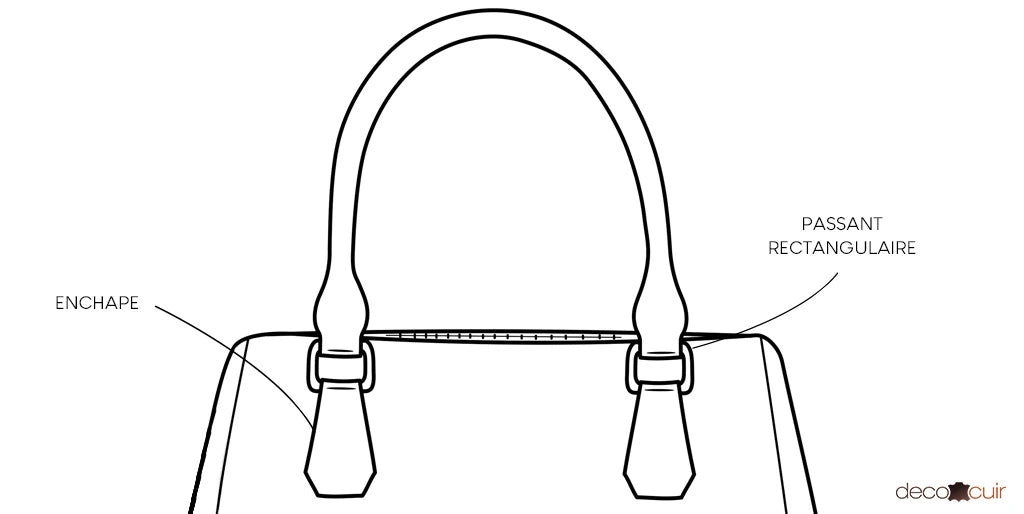
We invite you to watch the video above or consult step 4 of the “Leather travel bag” tutorial to learn more about this method.

If you have read the guide up to this point, you now know how to make a tubular leather handle. But it is not only the strand that can be used to sheathe a leather handle, we now explain how to make a reinforced leather handle with a collar strap.
The flat handles/coves have a slightly more masculine side, they will be ideal for computer bags or leather briefcases.
FLAT LEATHER HANDLE TUTORIAL

You need to master saddle stitch sewing to be able to make these handles. We recommend you check out our complete guide on this method.
VIDEO TUTORIAL: MAKE A PAIR OF FLAT LEATHER HANDLES
1- Define the shape of the reinforcement.
Take a 25 mm wide and 1.9 mm thick collar strap. Then cut the ends diagonally. The required length of strap must be defined according to the final length of each flat handle (8 cm must be subtracted from this final length – the ends are not reinforced) .
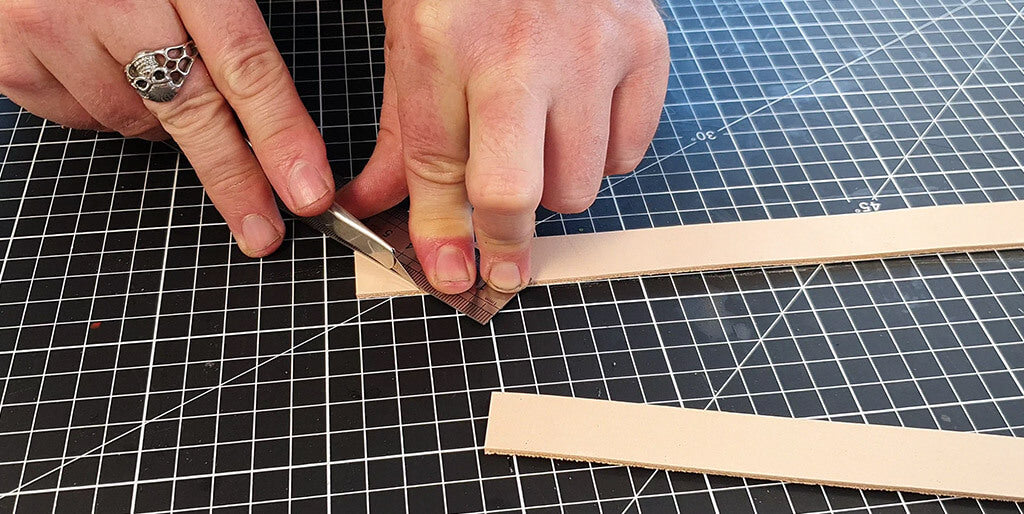
Then lightly square the sides that will be at the level of a seam (do not square the longest length of the reinforcement) . You must square the grain side and the crust side of the leather.
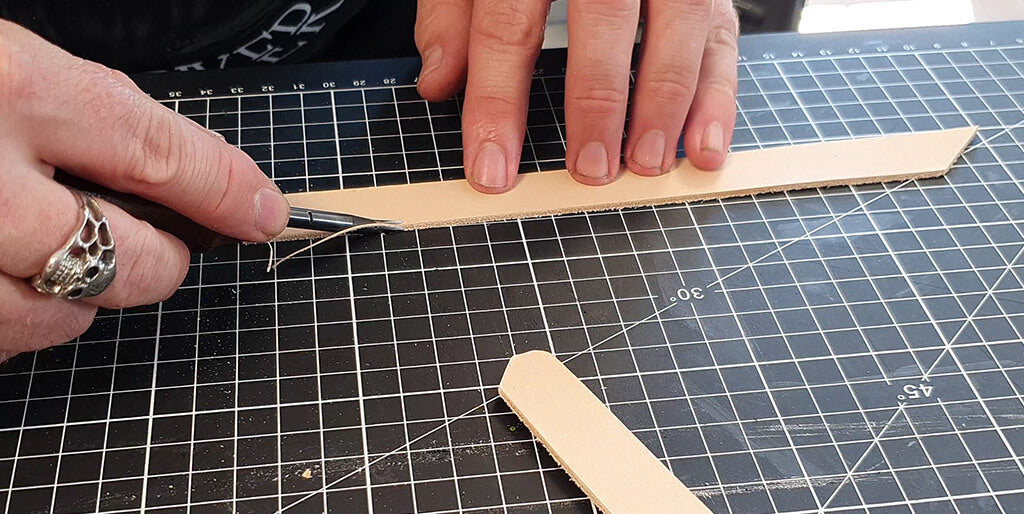
2- Cut a strip in the leather skin
For this tutorial we chose a leather from our Satinlys range (Brick Brown - Thickness: 1.2 mm - Reference: SY007). Given the flexibility of the leather, we reinforced the body of the bag with texon.
The width of the strip is defined according to the width and thickness of your reinforcement. In this case: width 25 mm and thickness 1.9 mm. You must then add 2x length (50 mm) + 2x width (4 mm) + add 8 mm (for the seam line) = 6.2 cm width.
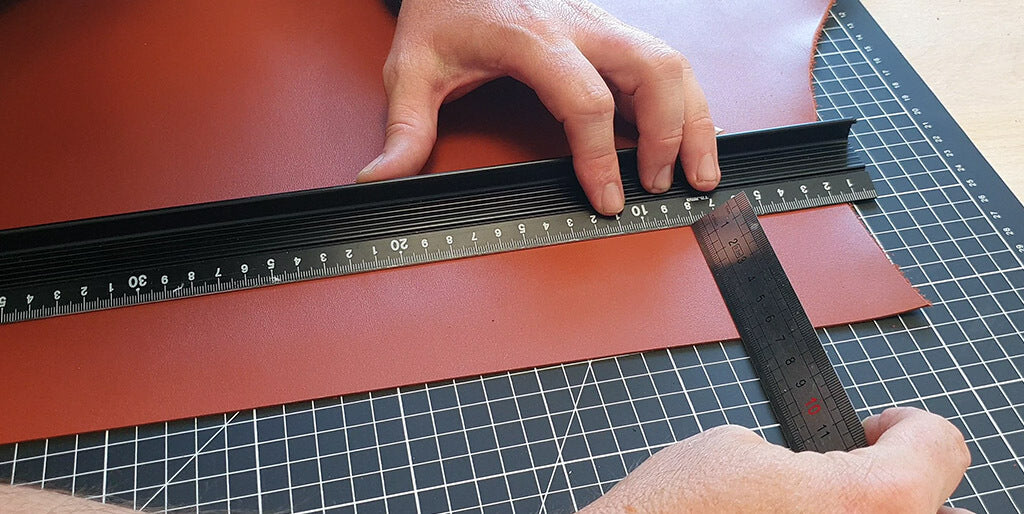
The length of the strip must be 11 cm longer than the reinforcement. Example: if the reinforcement is 52 cm long, the strip must be 63 cm. The final handle will be 60 cm (after cutting) .
Don't forget to do everything in duplicate to have a pair of flat handles.
3- Glue reinforcement on the back of the strip
Draw a mark 3 cm from one of the edges (add 5 mm to the width of the reinforcement: 25 + 5 = 30 mm). This mark will allow you to stick the reinforcement there.
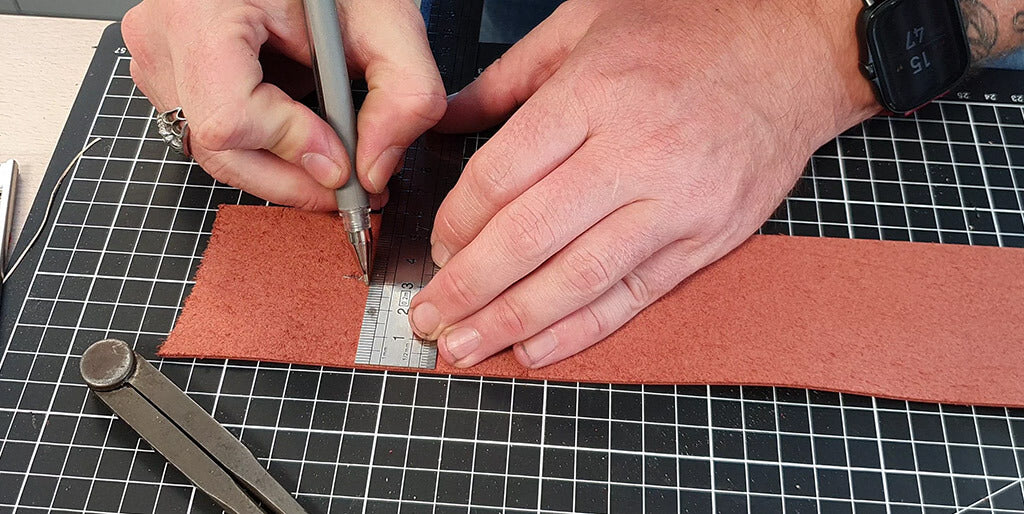
Position the reinforcement on the mark. Be careful to center it well before gluing.
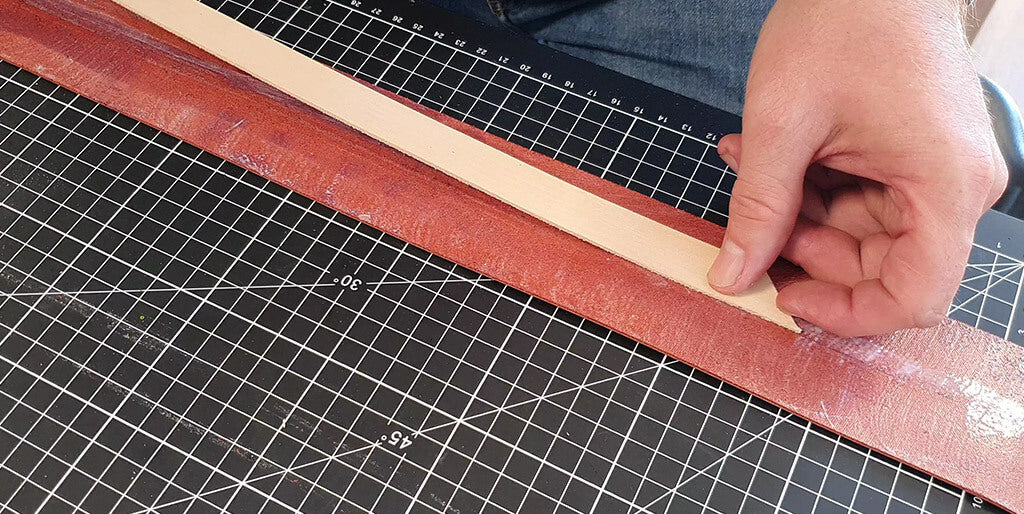
Facilitate the adhesion of the glue with a leather rasp (only on the grain side of the reinforcement – see step 4). Then apply leather contact glue (neoprene or water-based) to the back of the strip and the reinforcement. Wait a few minutes for the glue to soak in and then stick the reinforcement.
4- Form the flat handle
Apply glue to the flower side of the reinforcement, spreading it over its entire thickness. Then use a bone folder/smoothing tool to fold the strip over the reinforcement.

Then fold the leather down starting from the center (don't hesitate to use a marker).
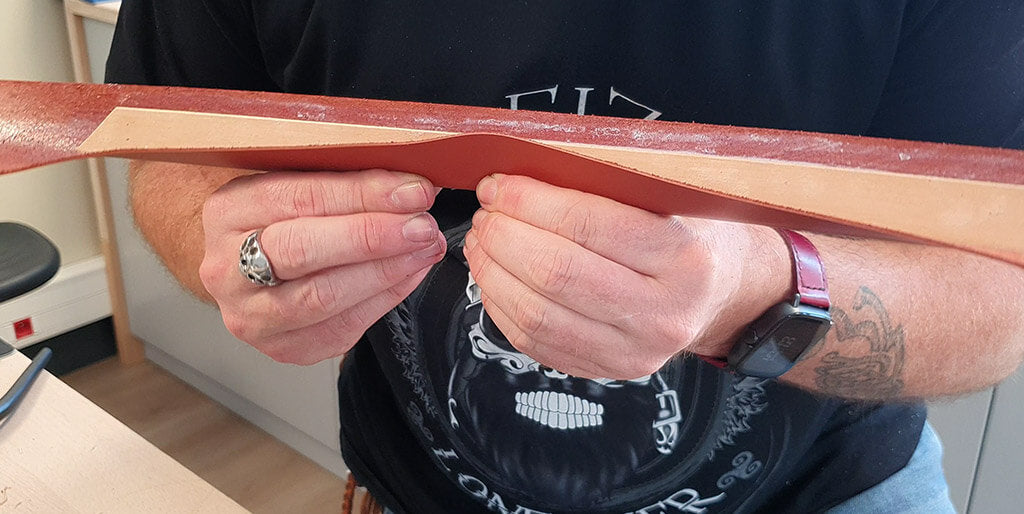
Also fold down at the ends where there is no reinforcement.
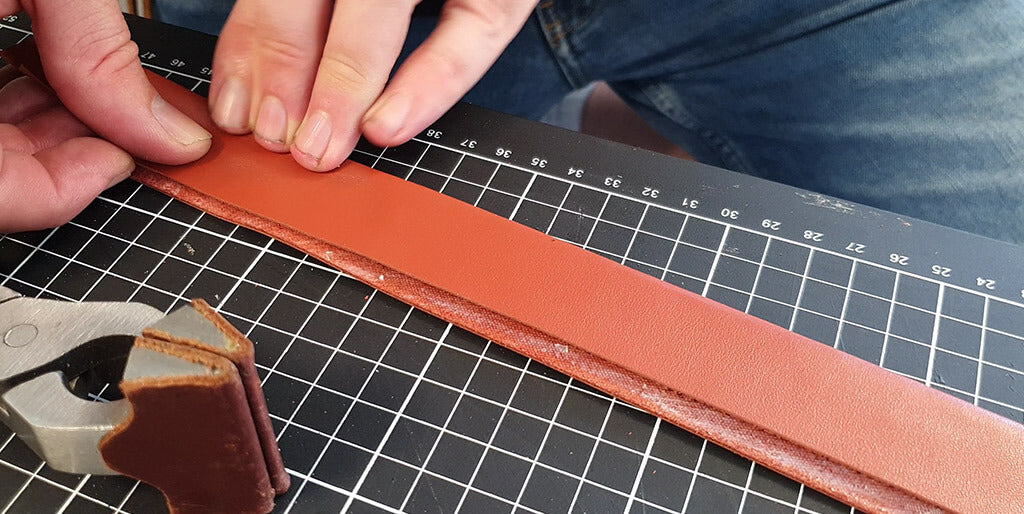
5- Mark the outline of the handle
Use a bone folder/smoothing tool to mark the edges of the reinforcement and form the handle.
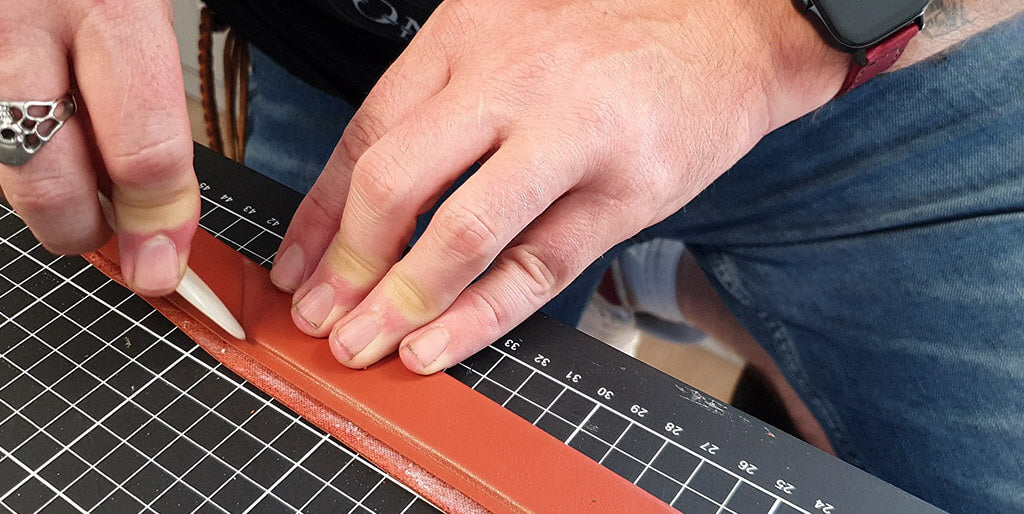
6- Cut the ends of the handle
Place a ruler (here 2 cm wide) at an angle and parallel to the ends of the reinforcement. Then cut.

7- Trace and scratch the sewing line
At the ends of the handle, trace the seam line with a dry-point compass 3-4 mm from the edge.
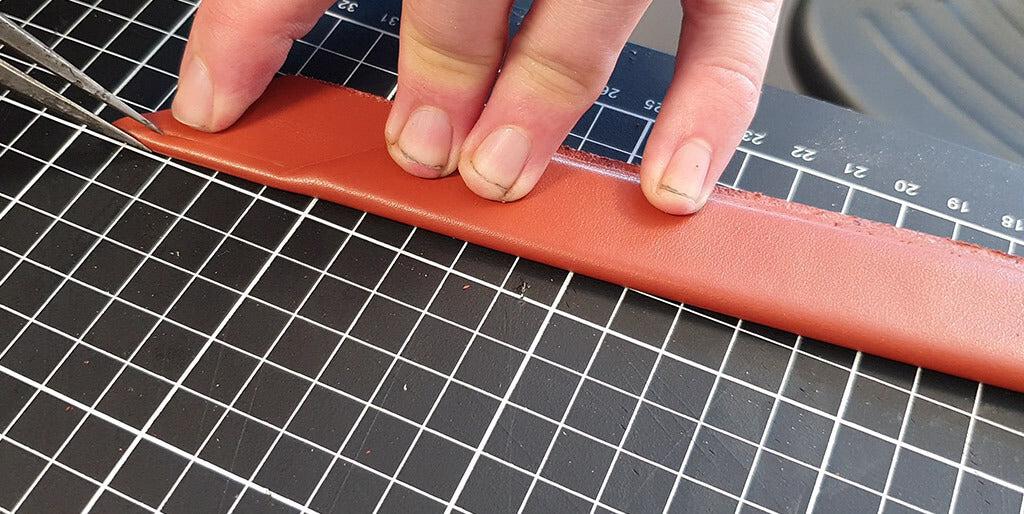
Then mark the stitching points with a mallet and a striking claw. The aim is not to pierce the leather completely but only part of its thickness.
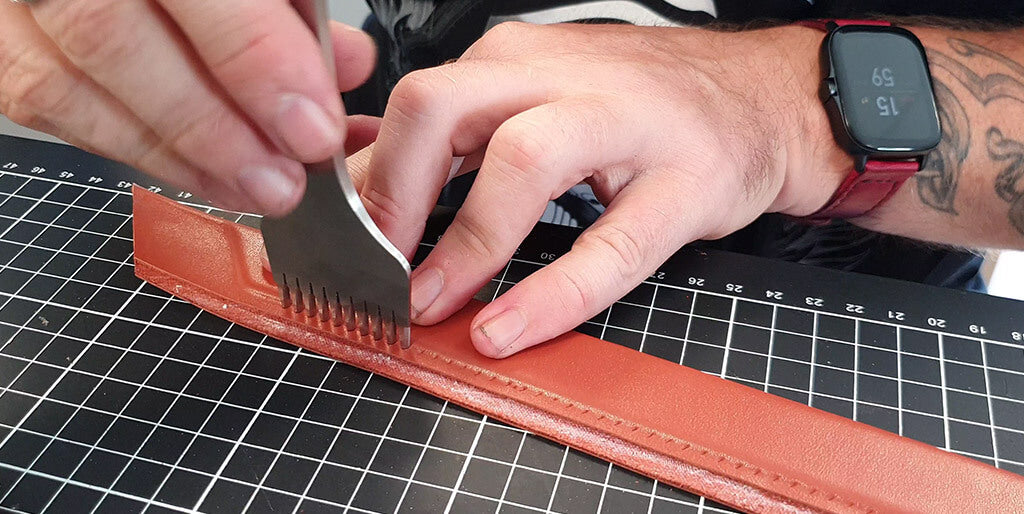
8- Trim the excess leather
Using a rotary cutter, even out the edges of the leather.
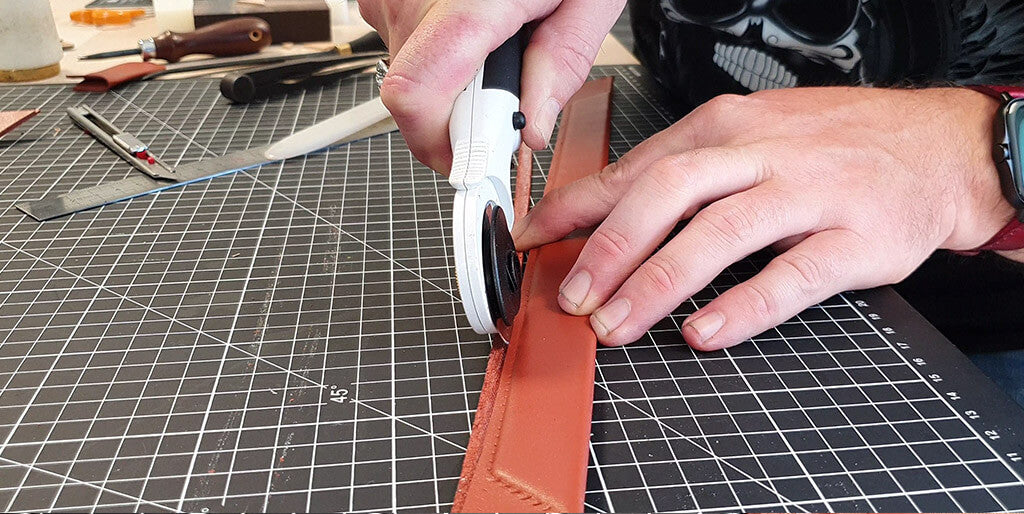
9- Sew the saddle stitch
Thread a needle through each end of the thread and sew using a saddle stitch.
SEE THE SADDLESTITCH SEWING GUIDE >
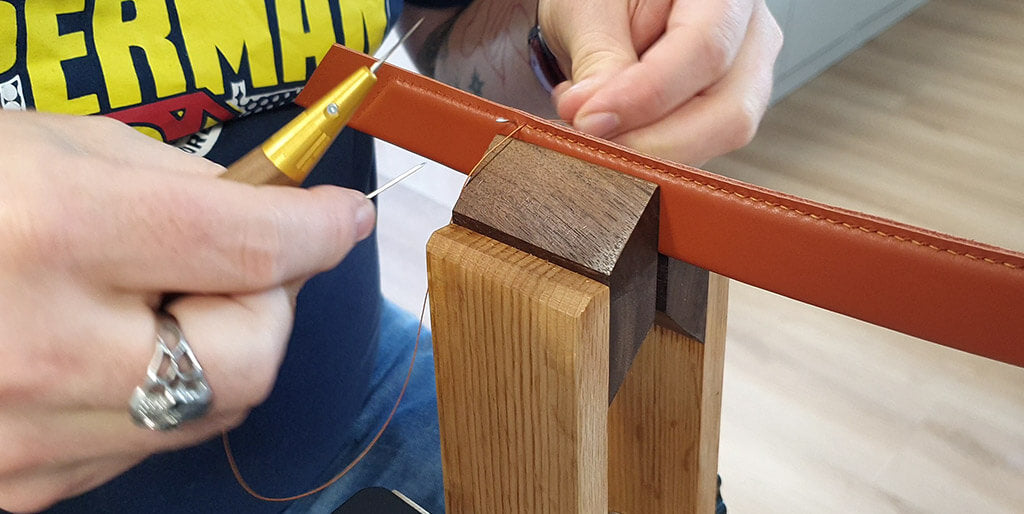
Use a round awl to help you, then finish sewing by bringing the needles out through the edge and making a knot.
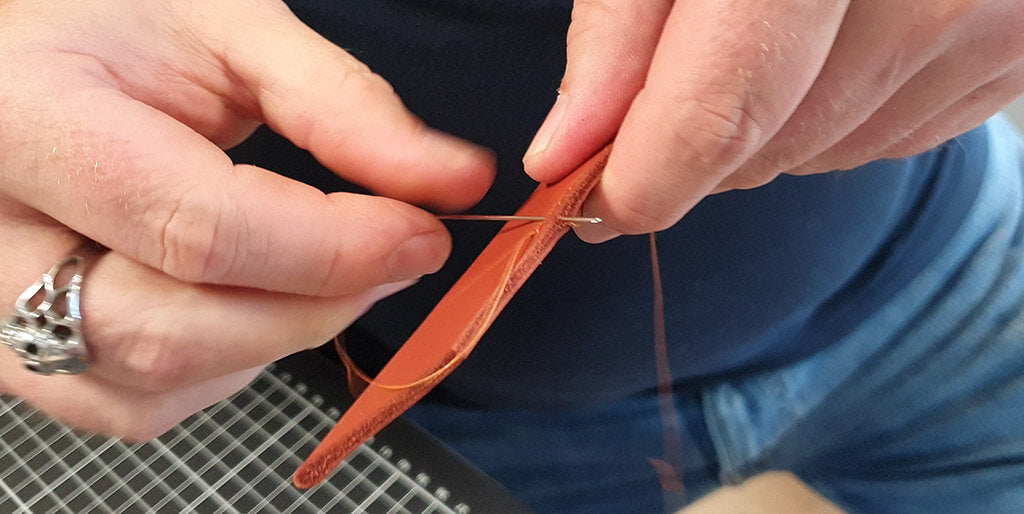
Smooth/hammer the stitches using a smoother.
10- Work the leather slices
Sand the edges and apply at least 3 coats of finish, sanding between each coat.
SEE THE GUIDE TO WORKING SLICES >
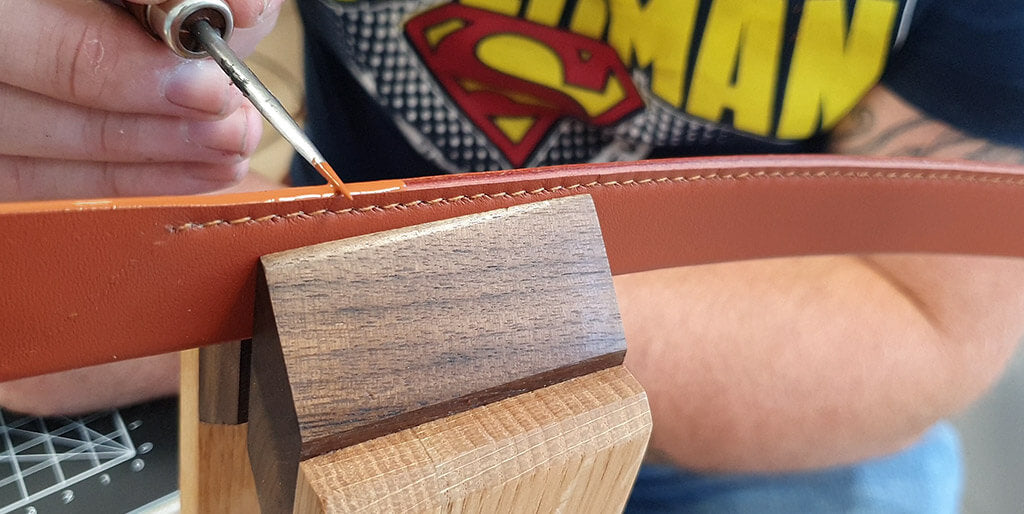
11- Glue the handles to the body of the bag
Position the handles on the body of the bag. You must leave at least 1 cm of margin between the top of the body of the bag and the start of the handle sewing.

Using a round awl, mark the position of the handles on the body of the bag.
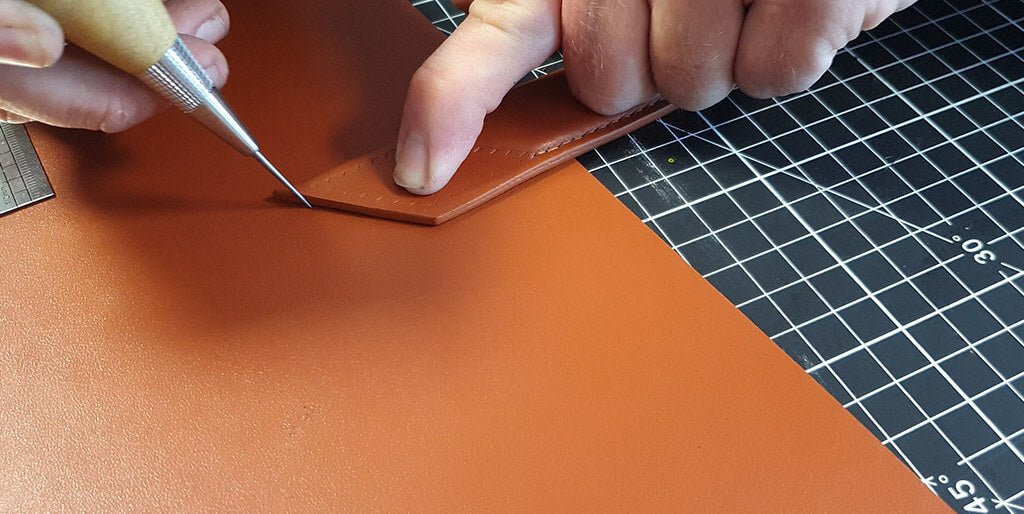
Lightly scrape the grain of the leather to facilitate the adhesion of the glue. Do the same thing on the end of the strap that will be glued, being careful to do it only inside the stitching line. Then glue and hammer the bonding.
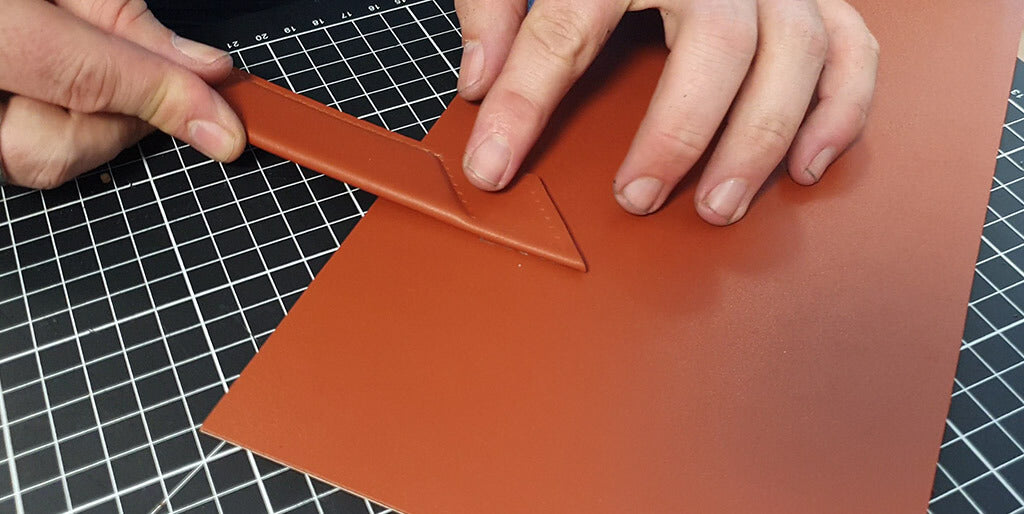
12- Sew the handles onto the body of the bag
Sew the handles and finish the seam by tying knots on the side that will be doubled. 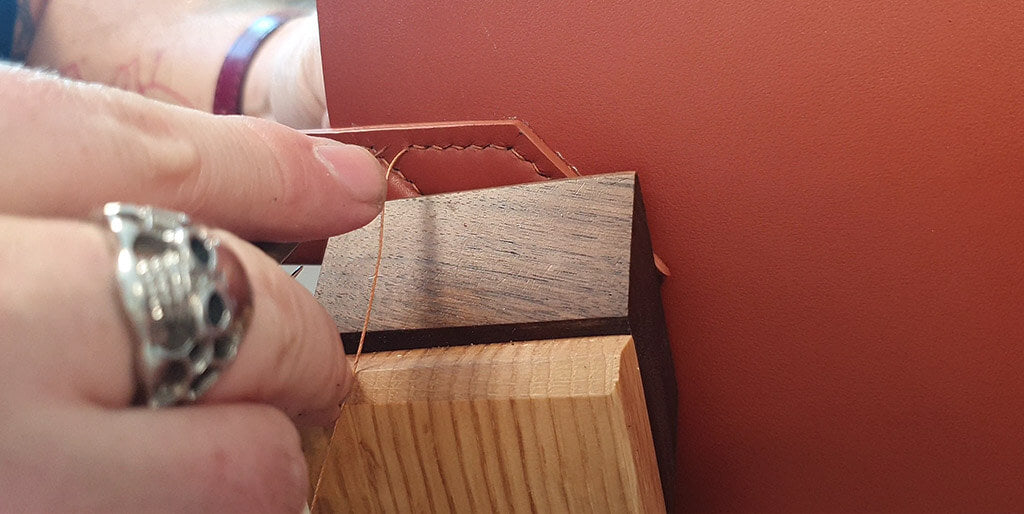
*The body of the bag has been reinforced with texon. 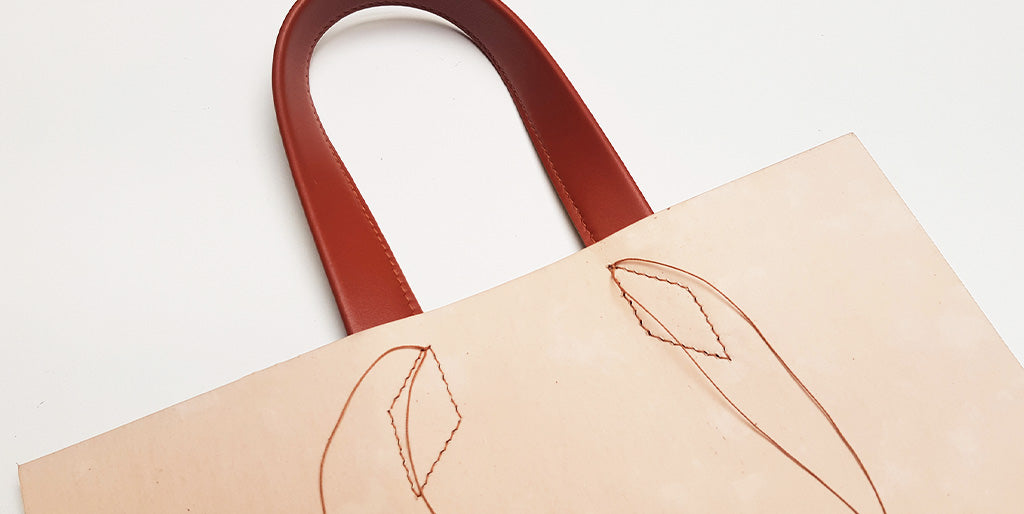
Do the same on the other part of the bag. Sew the second handle/grip.

FLAT HANDLES/STRAPS WITHOUT SHEATHING
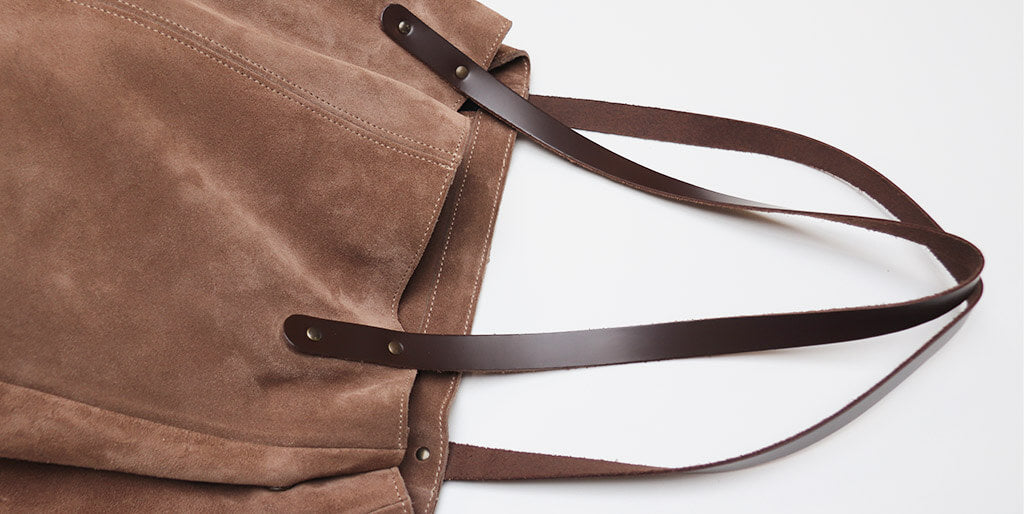
Make your life easier with our removable leather handles, they are ready to be attached, sewn and/or riveted onto your handbags!
How to attach a bag handle to leather?
Opt for our pairs of pre-cut leather bag handles! They are available in several colors, widths (15, 18 and 29 mm) and lengths (60, 70, 75 and 80 cm). For this type of handle, you only need 8 Chicago screws or 8 T3 to T6 rivets to attach them to your bag!
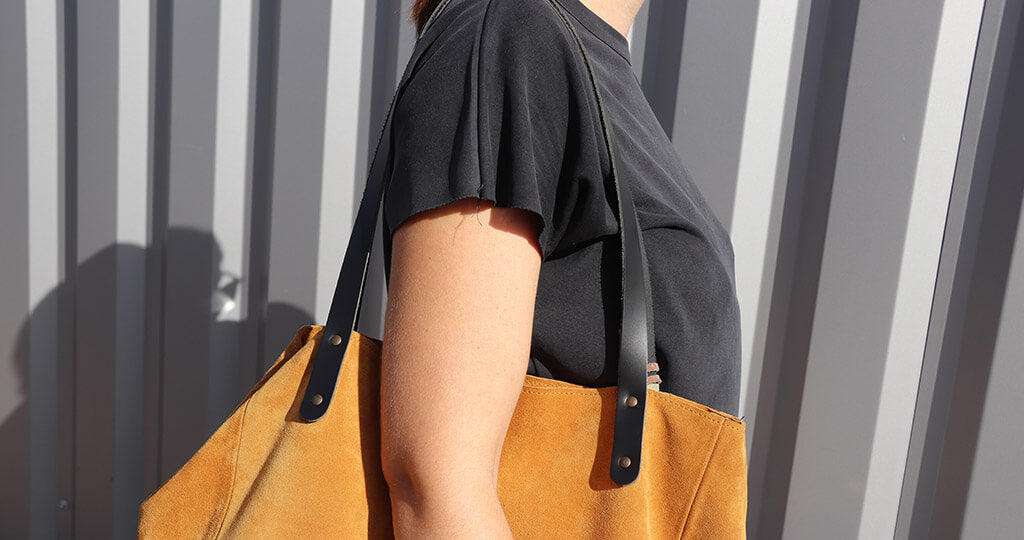
Then, let your creativity run wild by adding or not buckles: rectangular loop, rotating carabiner, half-round ring, etc.
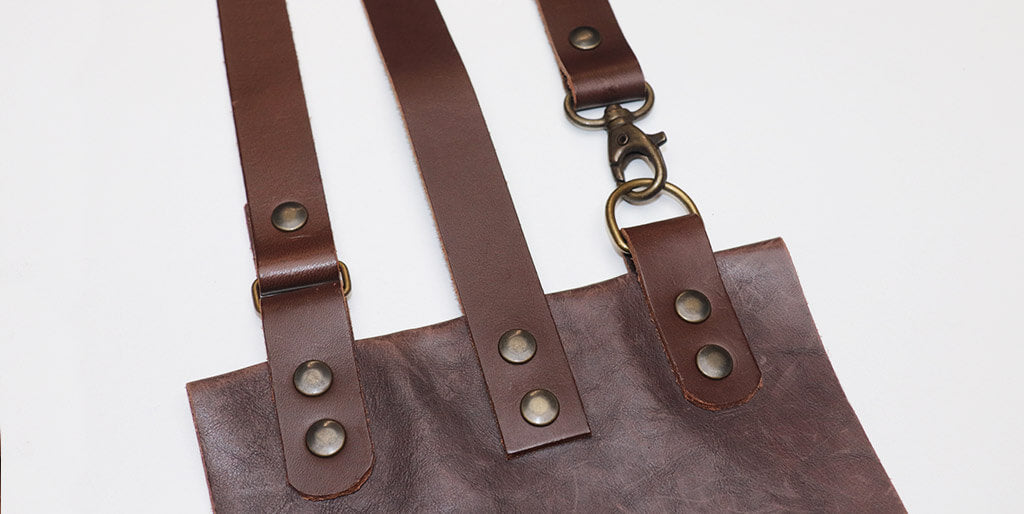
How to make a leather strap/shoulder strap?
As stated in the introduction, a leather strap is on average 100 to 120 cm in length.
If you choose one of our (soft) mineral tanned straps to make your bag strap, we advise you to double it (sew two straps together) so that it is more resistant and prevents it from deforming. This will also prevent the crust side from being visible, which tends to bleed if the color of the strap is bright (the other option is to wax the crust side with tokonole) .
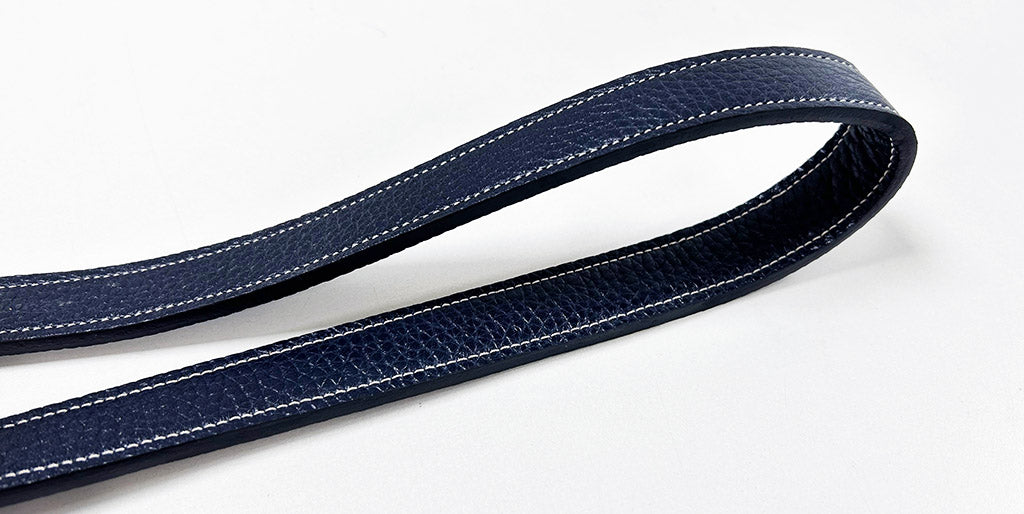
TUTORIAL
For this tutorial, choose soft straps because the leather is softer and therefore easier to sew with a machine. We chose a GROGRAIN leather strap 2.3 mm thick and 40 mm wide: you should always take a width greater than the width of the final strap because the strap will be cut after gluing.
1- Put tear-proof tape on the crust sides of the straps to reinforce them and prevent them from stretching.

2- Apply leather glue to the back of the straps and glue. Reinforce the bonding using a steel roller.
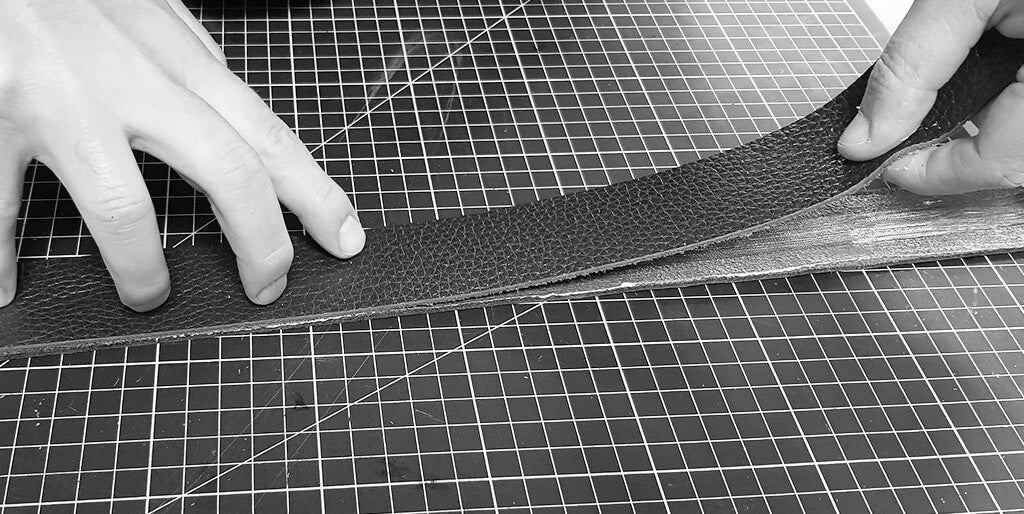
3- Define and trace the final width of the strap. Then overcut , this allows you to have very clean edges (be careful to choose a wider strap to start with) .
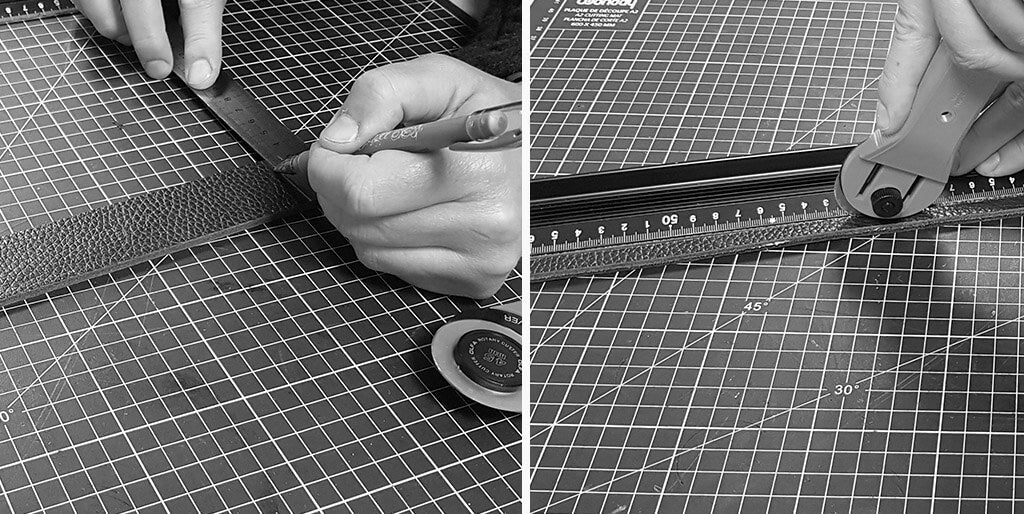
4- Sew all around the strap 4 mm from the edge and with a Teflon presser foot.
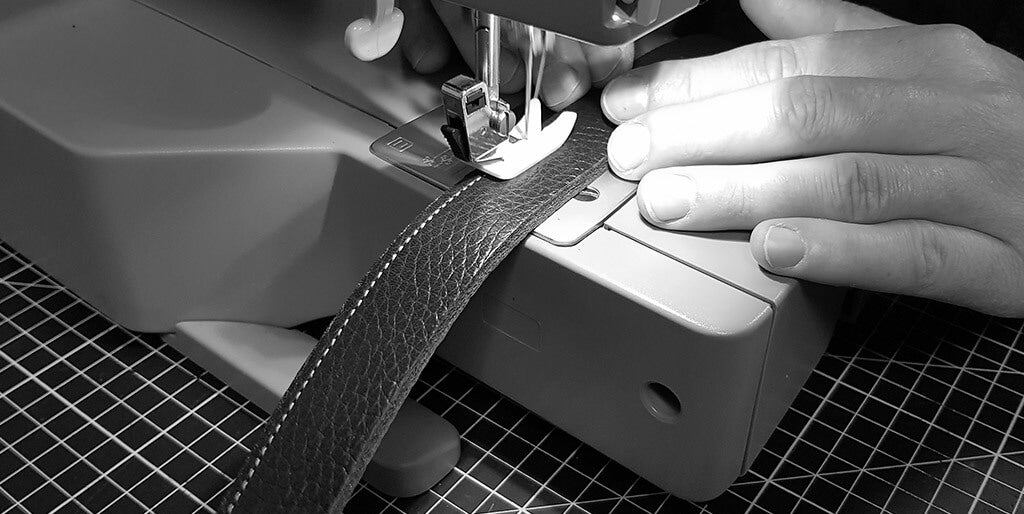
5- Work the slices to have a professional finish (sand the slices and apply a finish/paint) .

For collar straps, we invite you to consult our guide "How to double a leather strap with pigskin suede?" , you will also learn how to make an adjustable strap.
What alternative to leather straps?
To give a more "rock" side to your bag, you can opt for a bag chain. There will always be the possibility of adding a leather strip at the shoulder. The links of our bag chains are unwelded which allows you to easily adjust the size of the chain. Several finishes are available: nickel-plated, gold-plated, aged brass, gunmetal...


